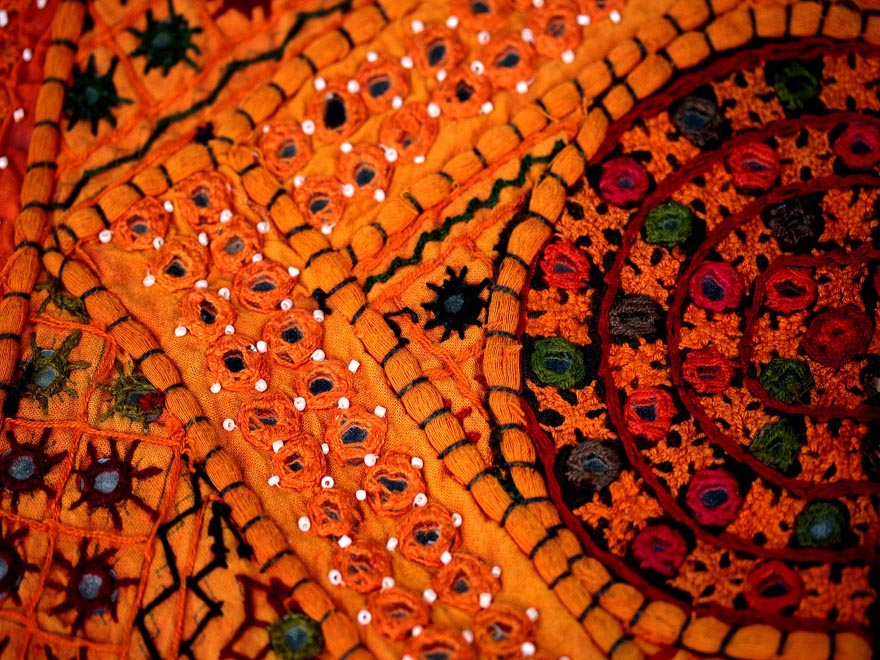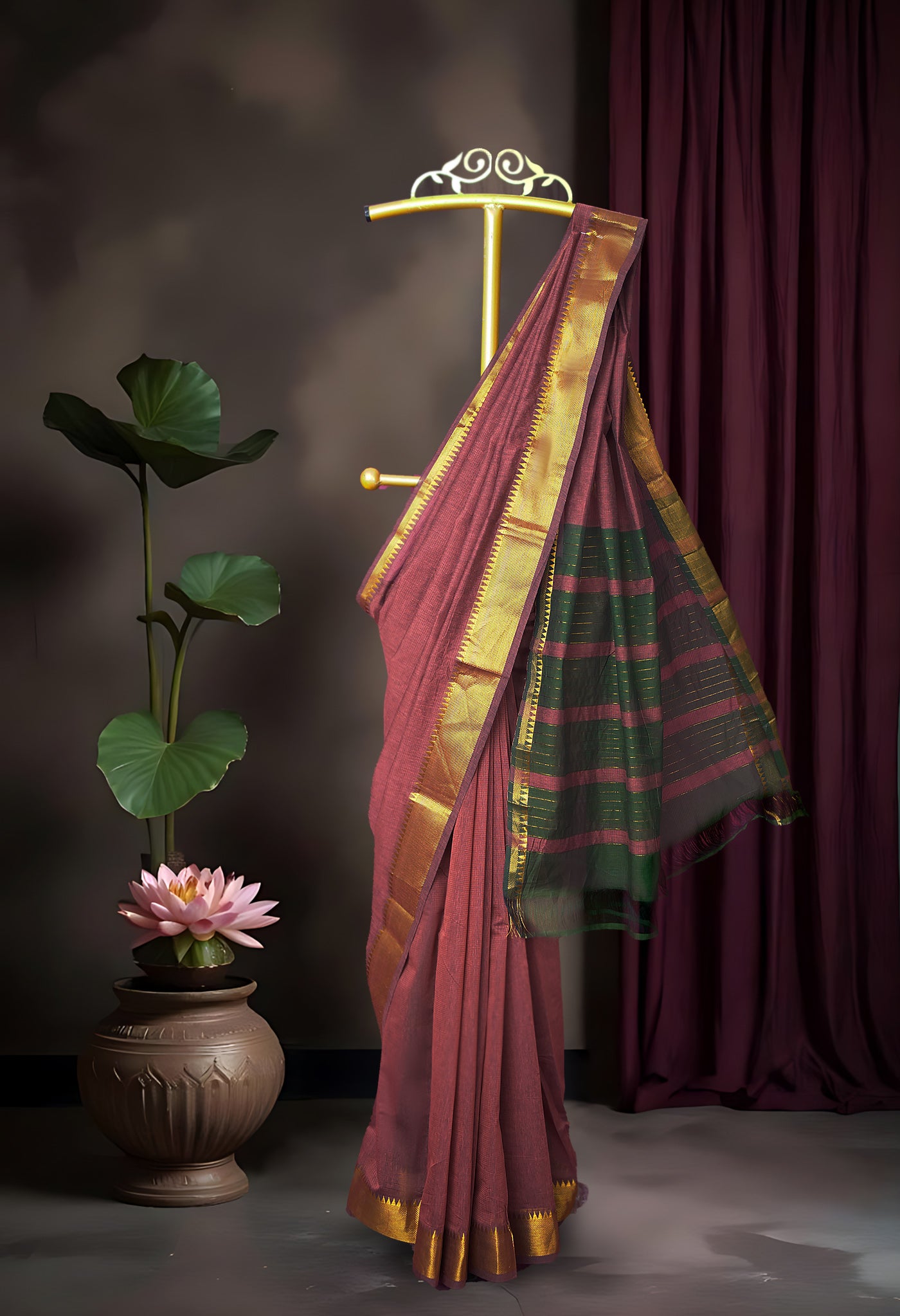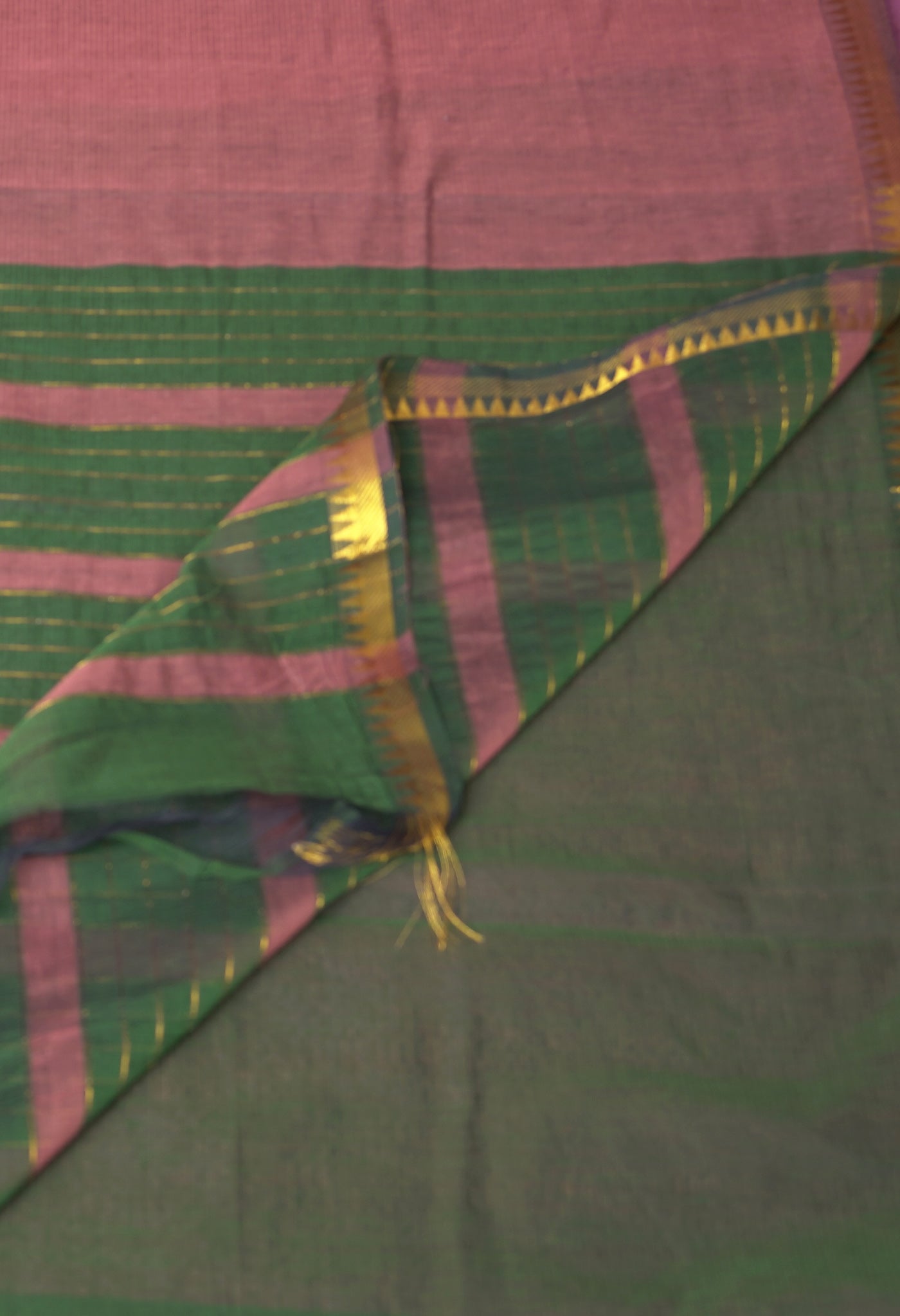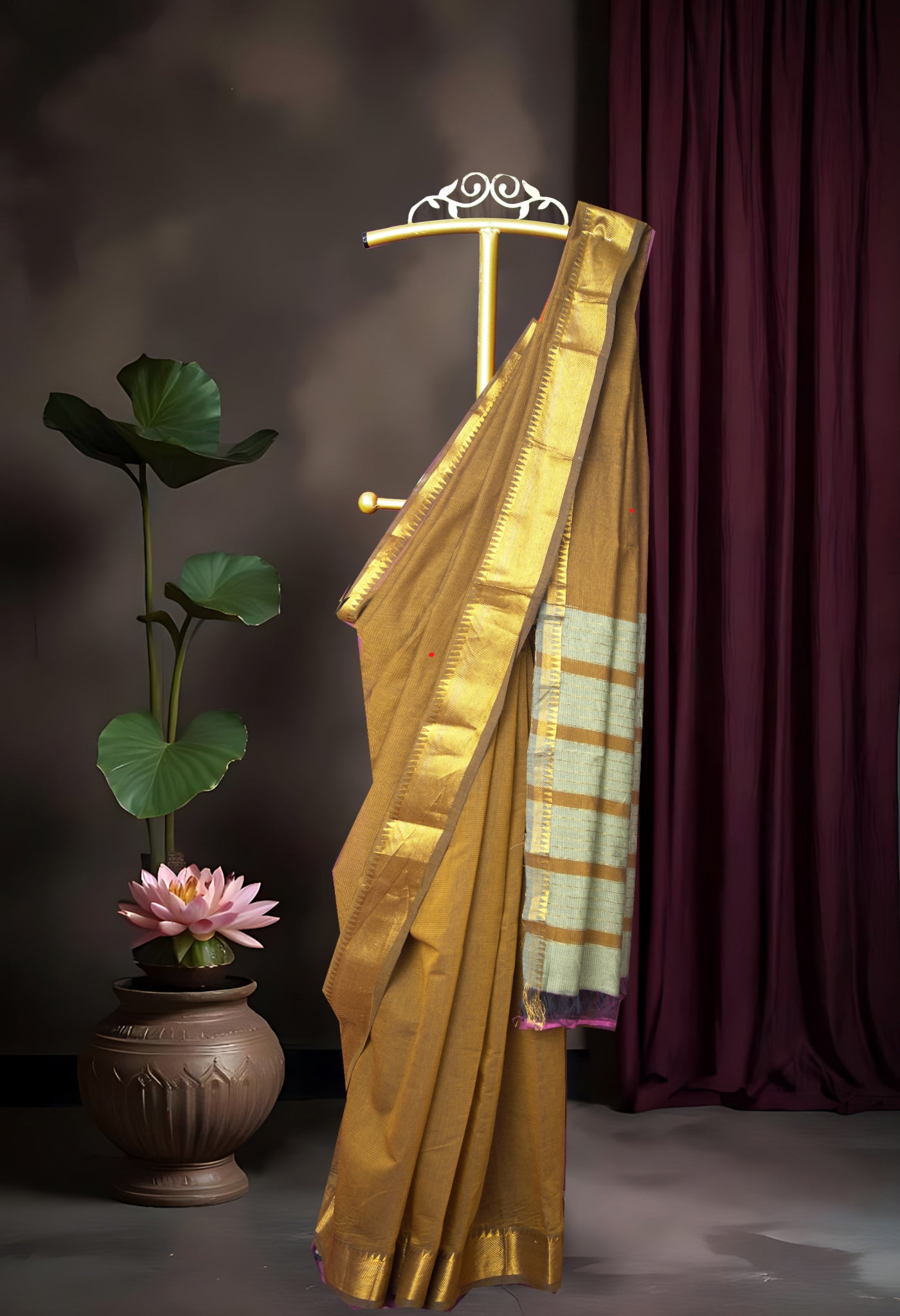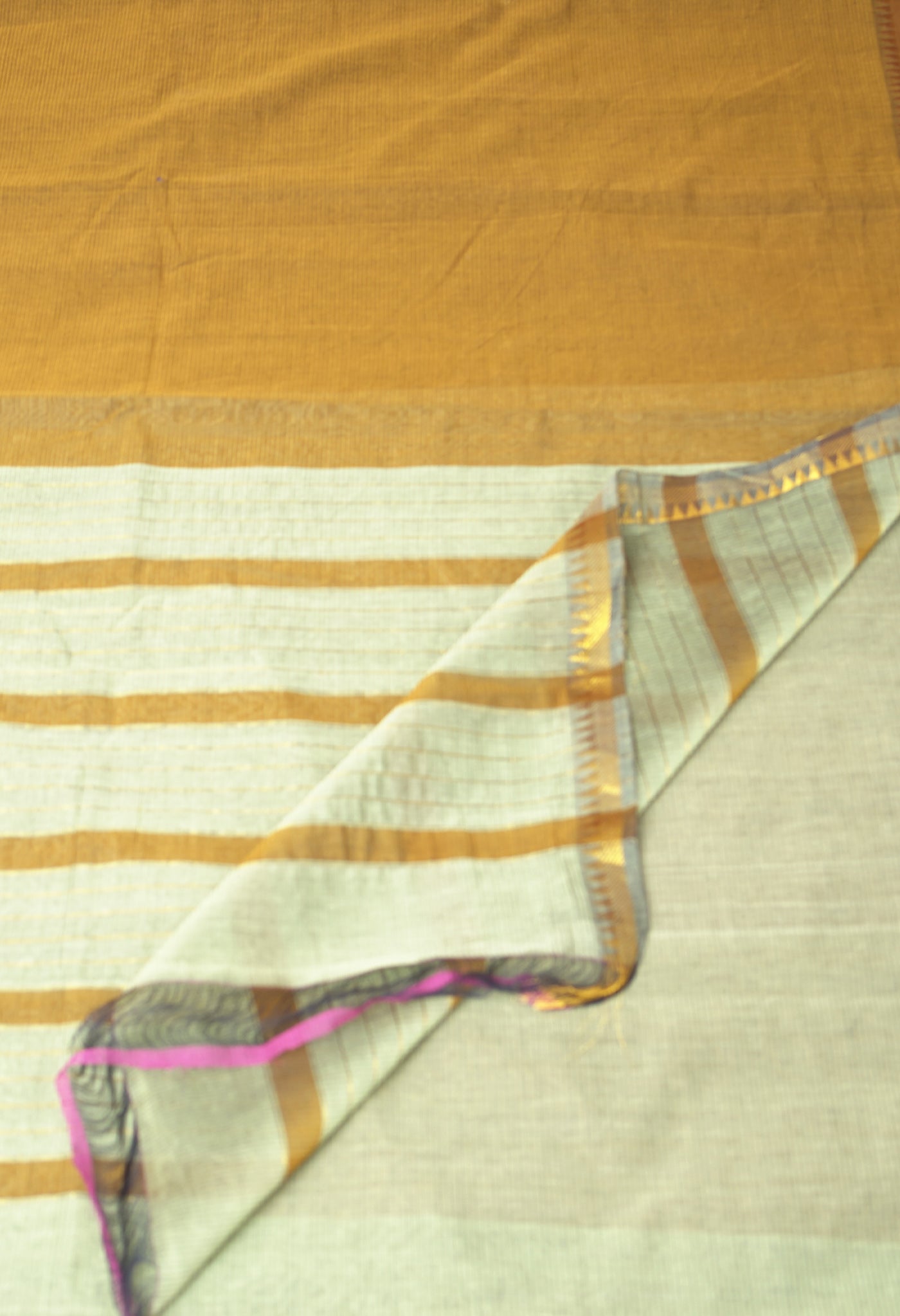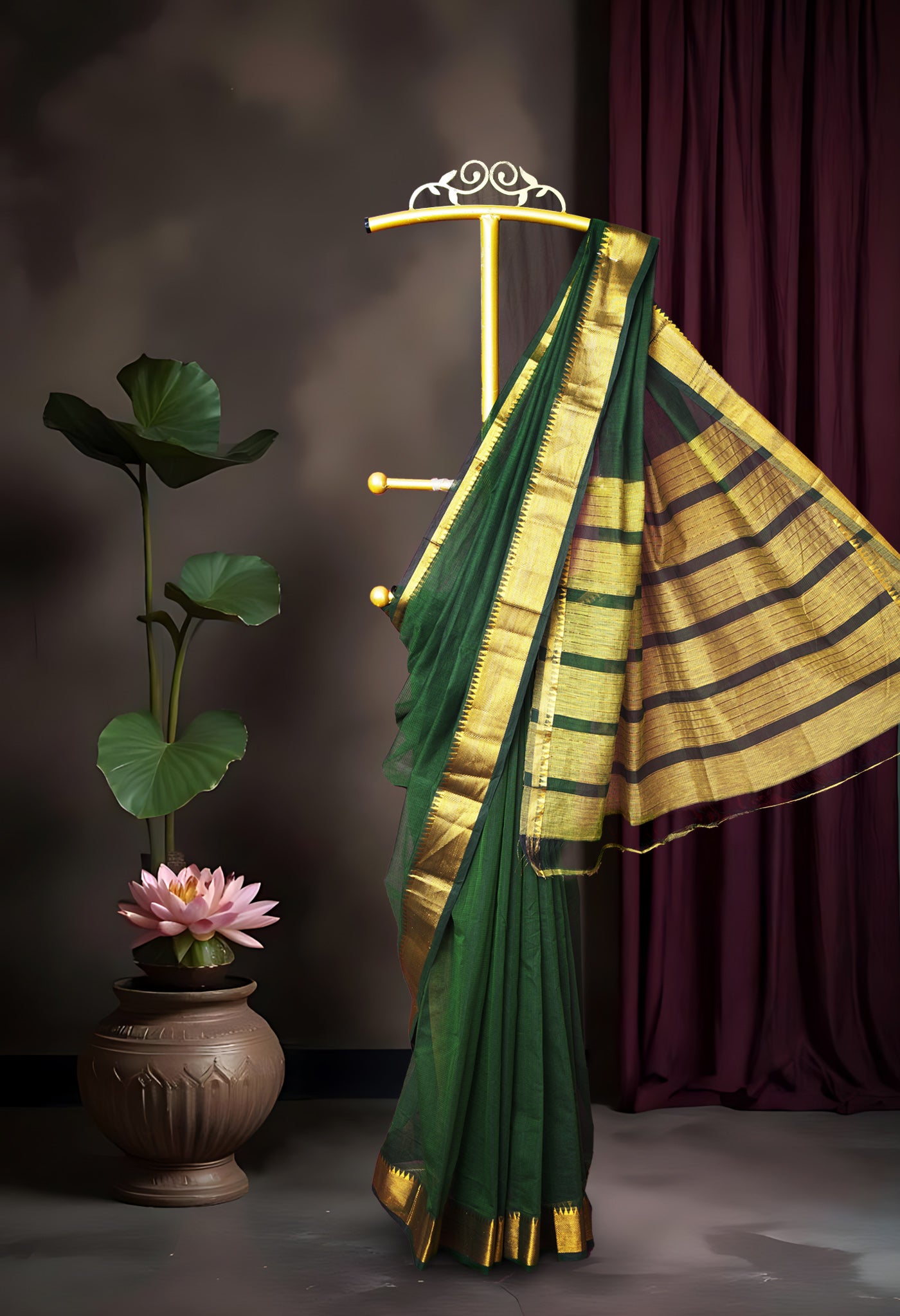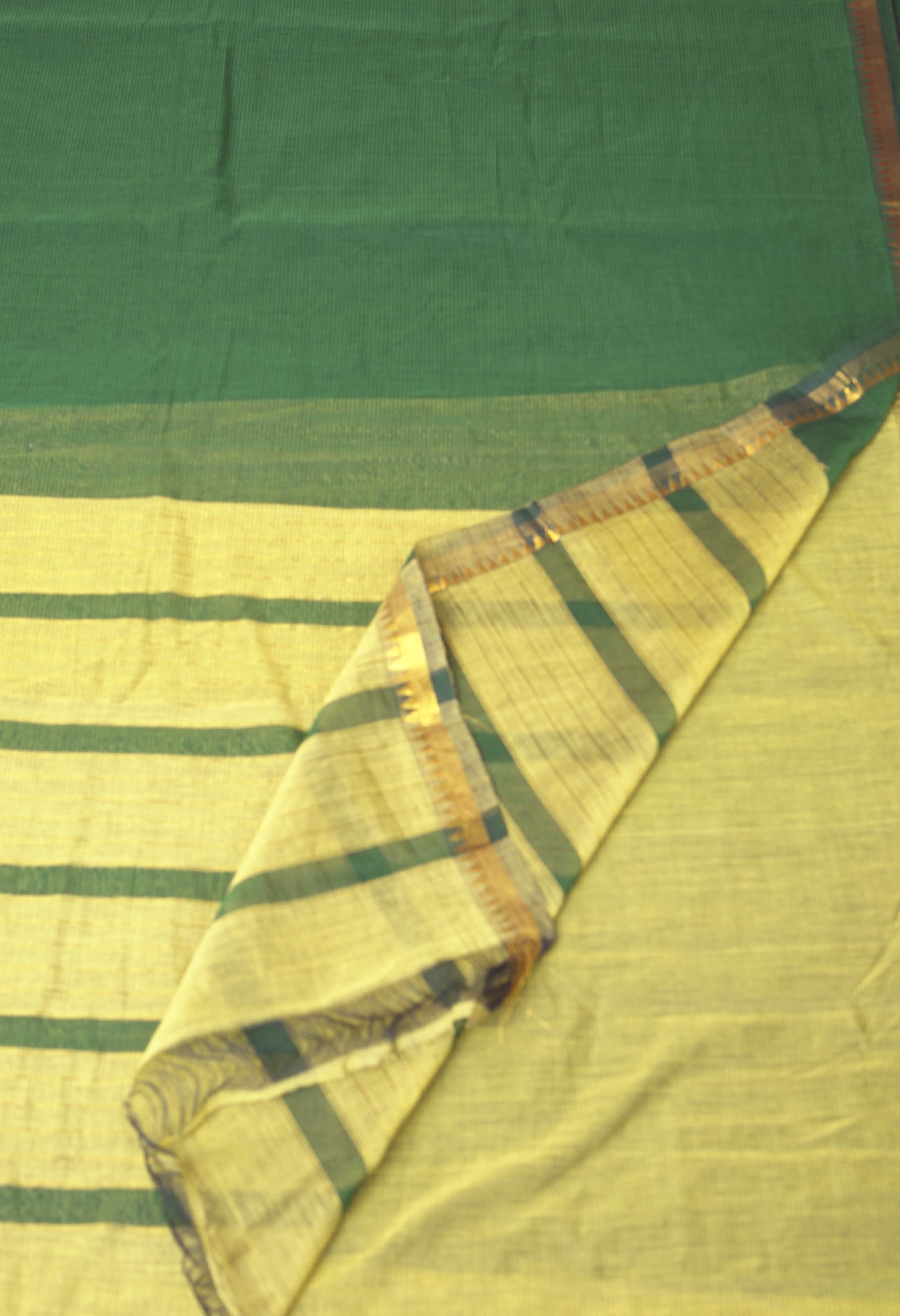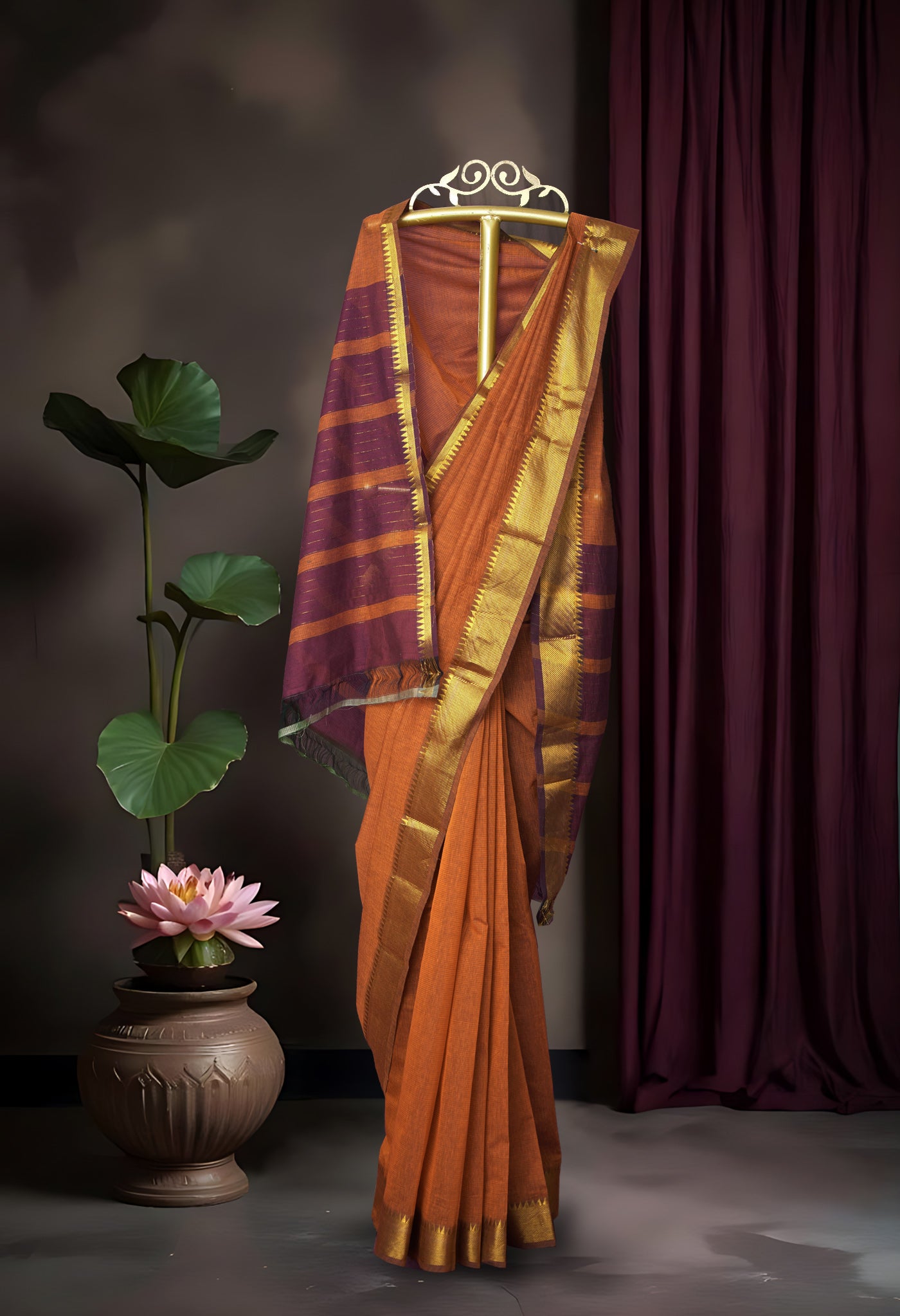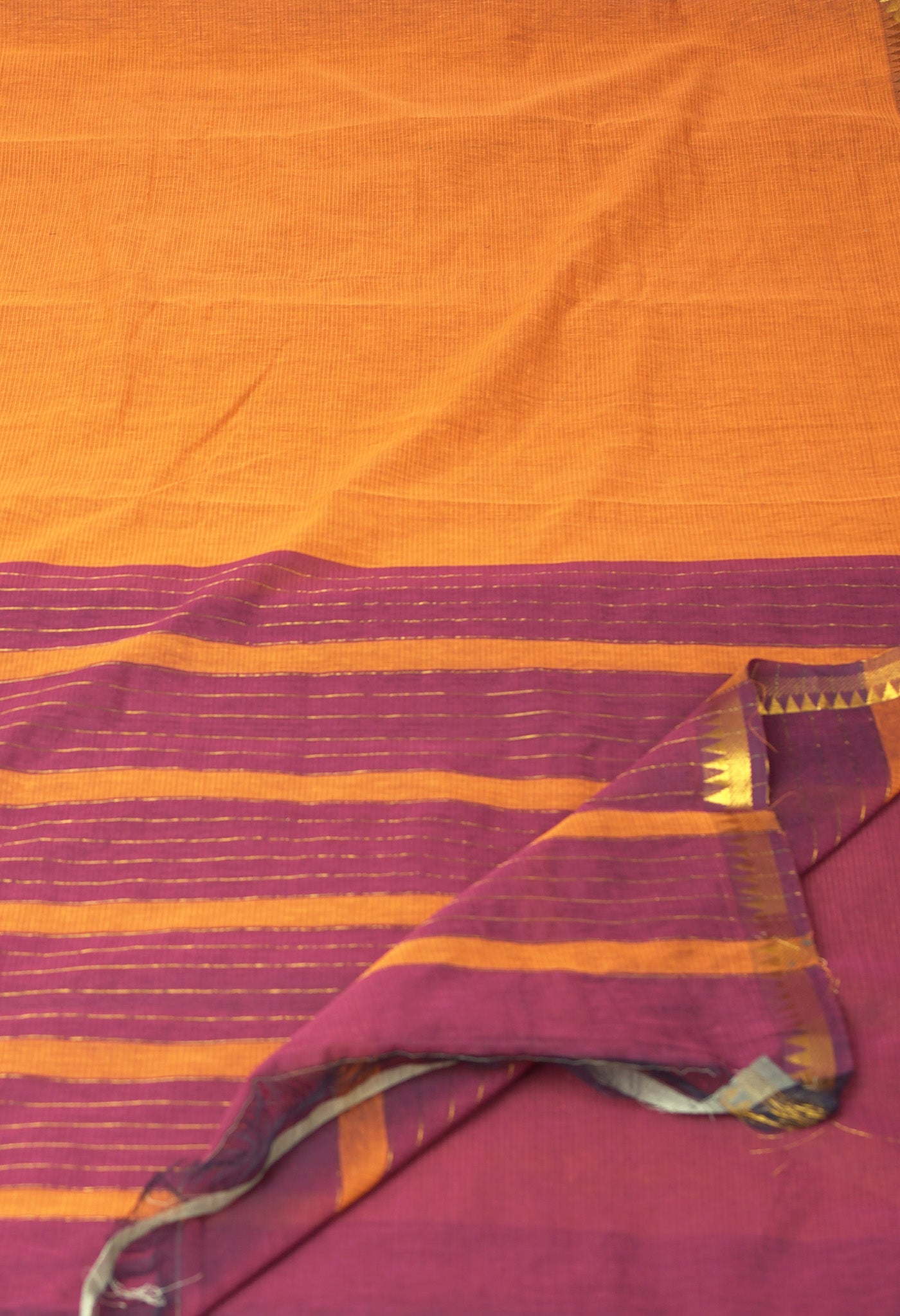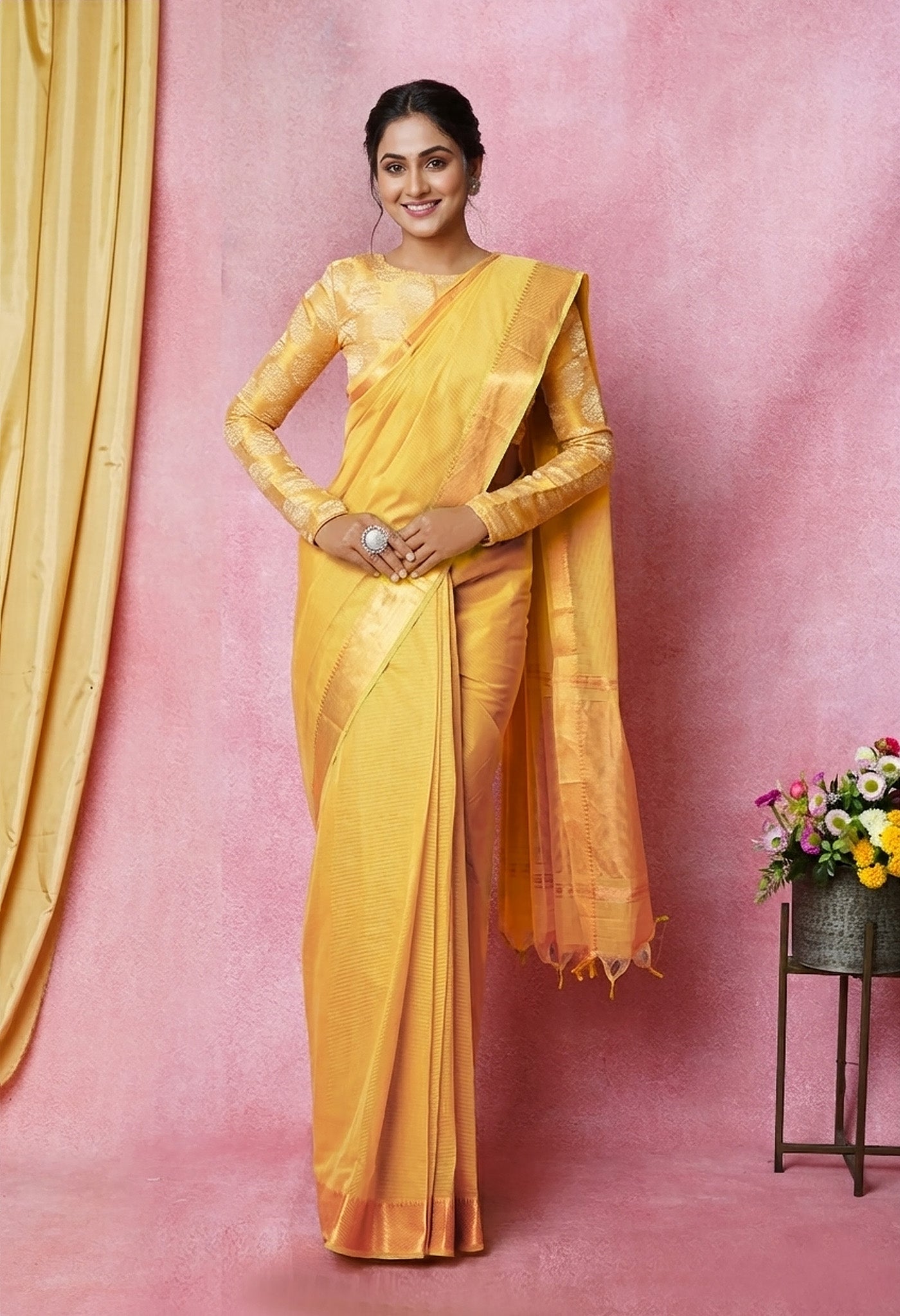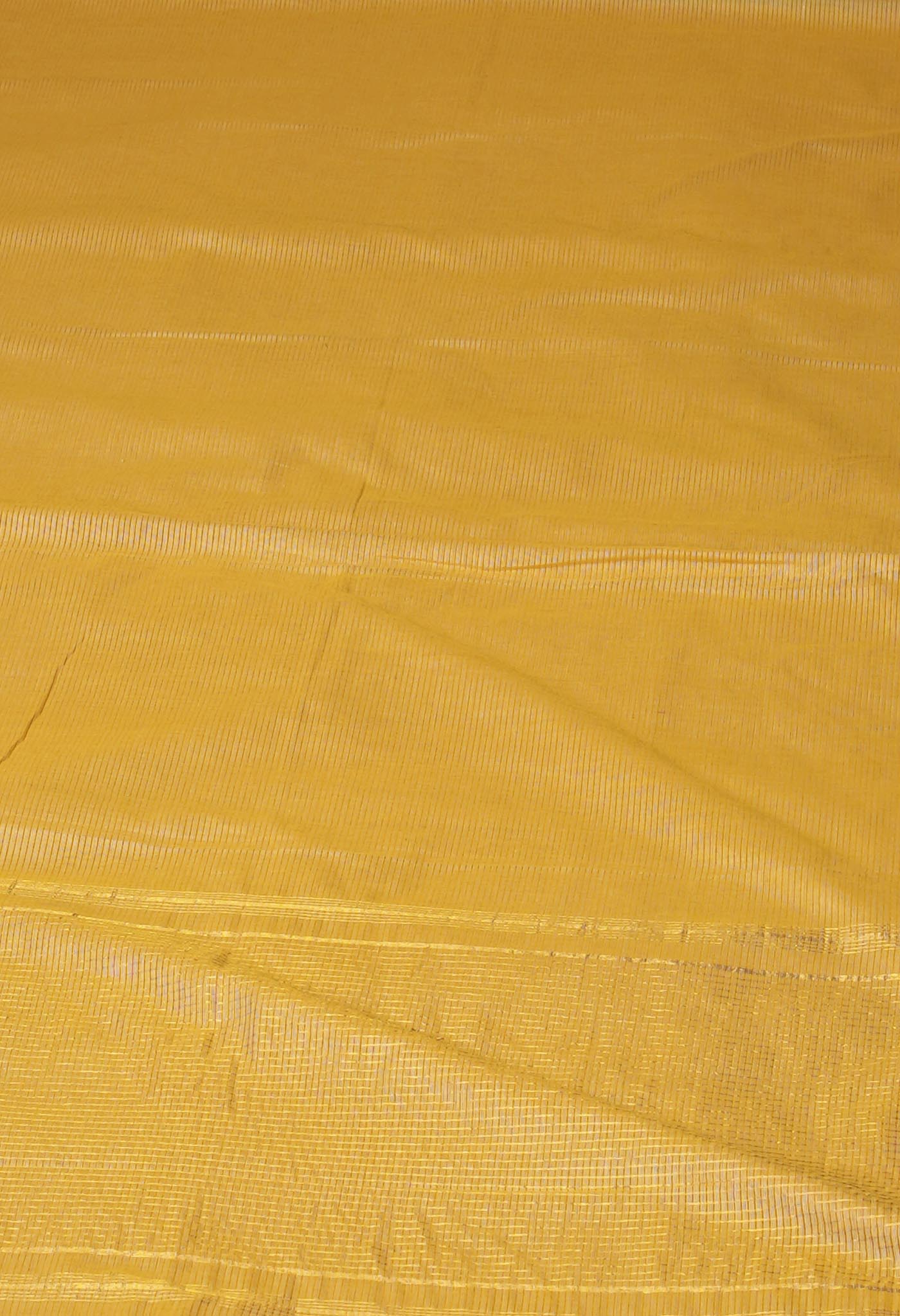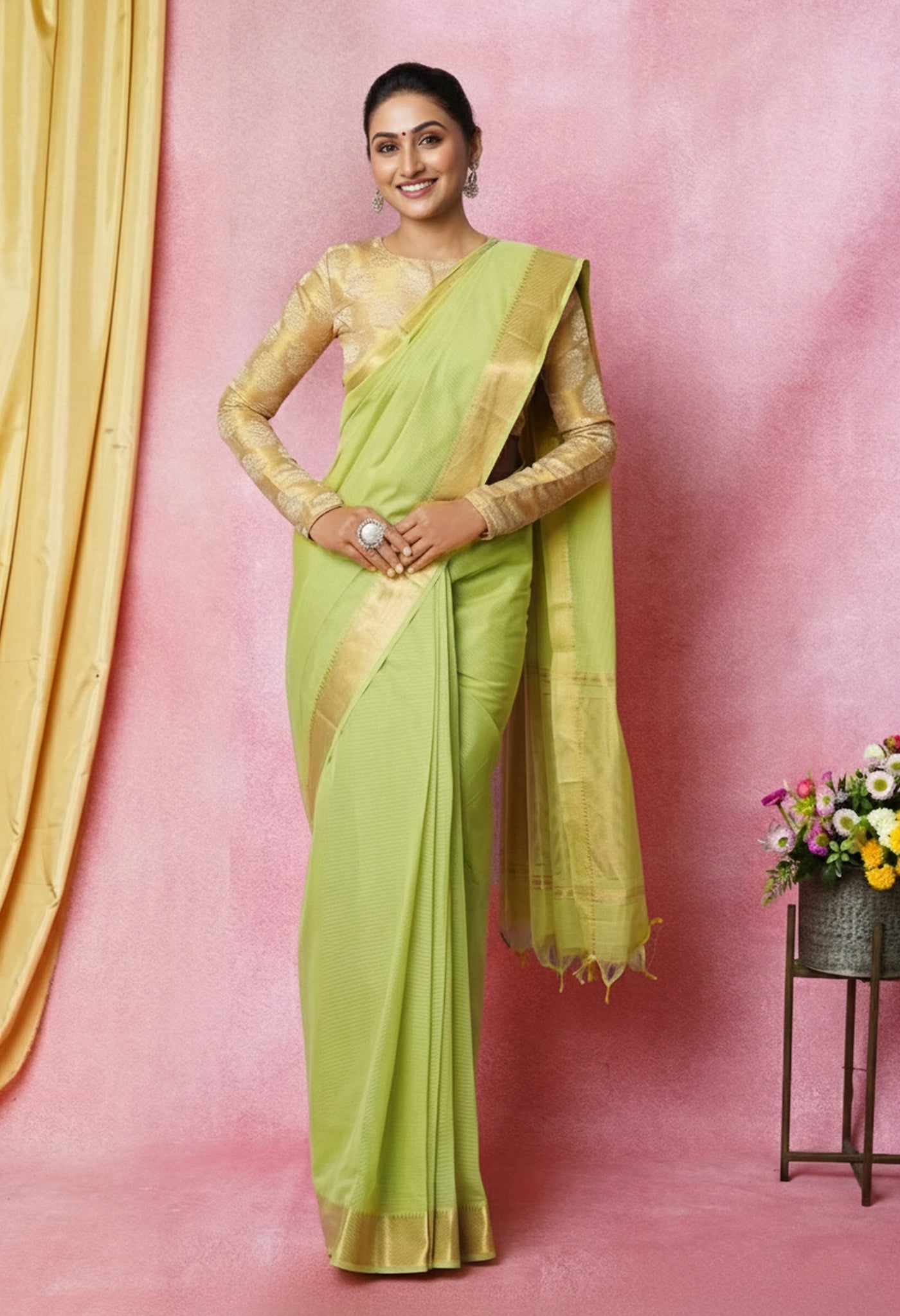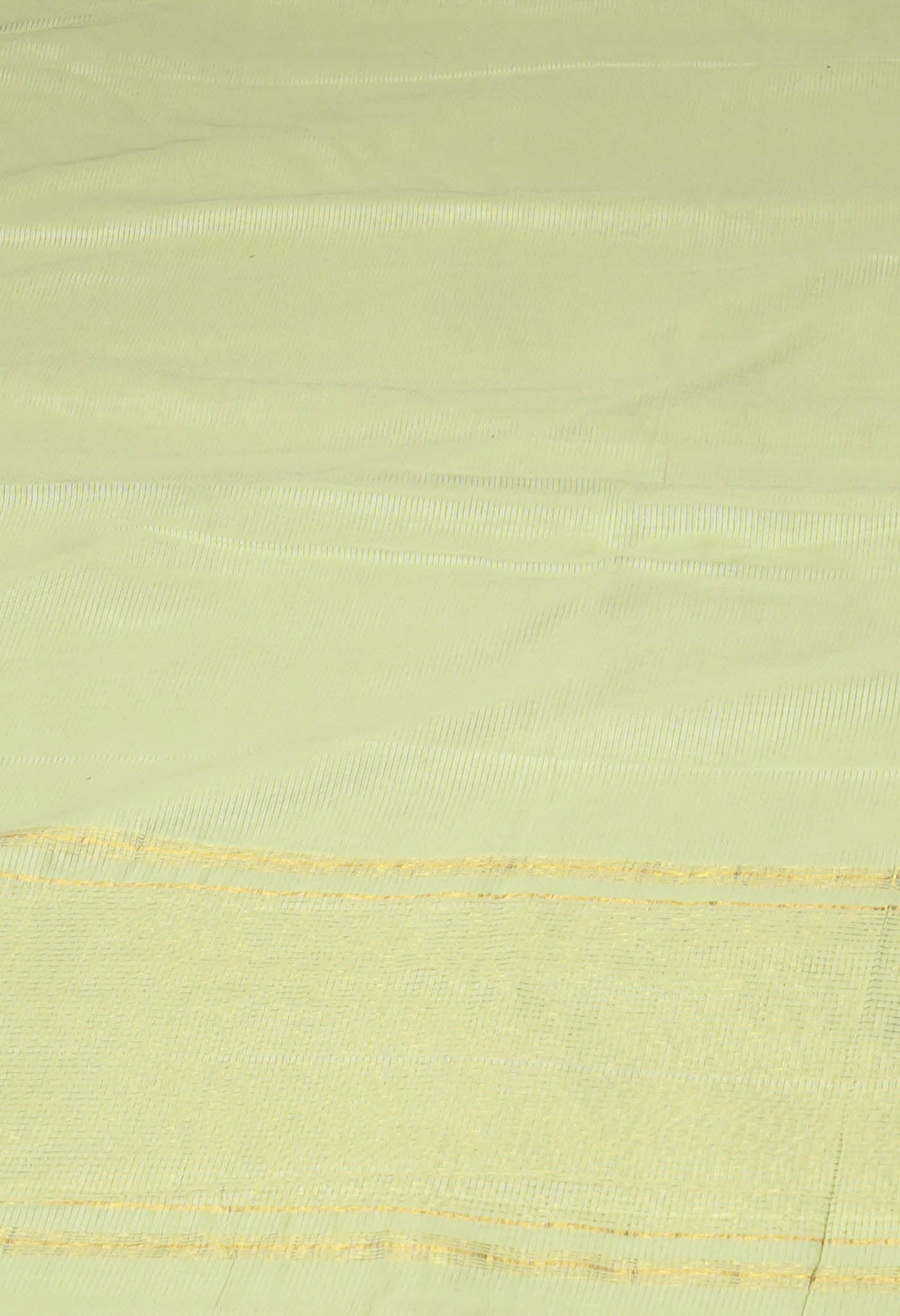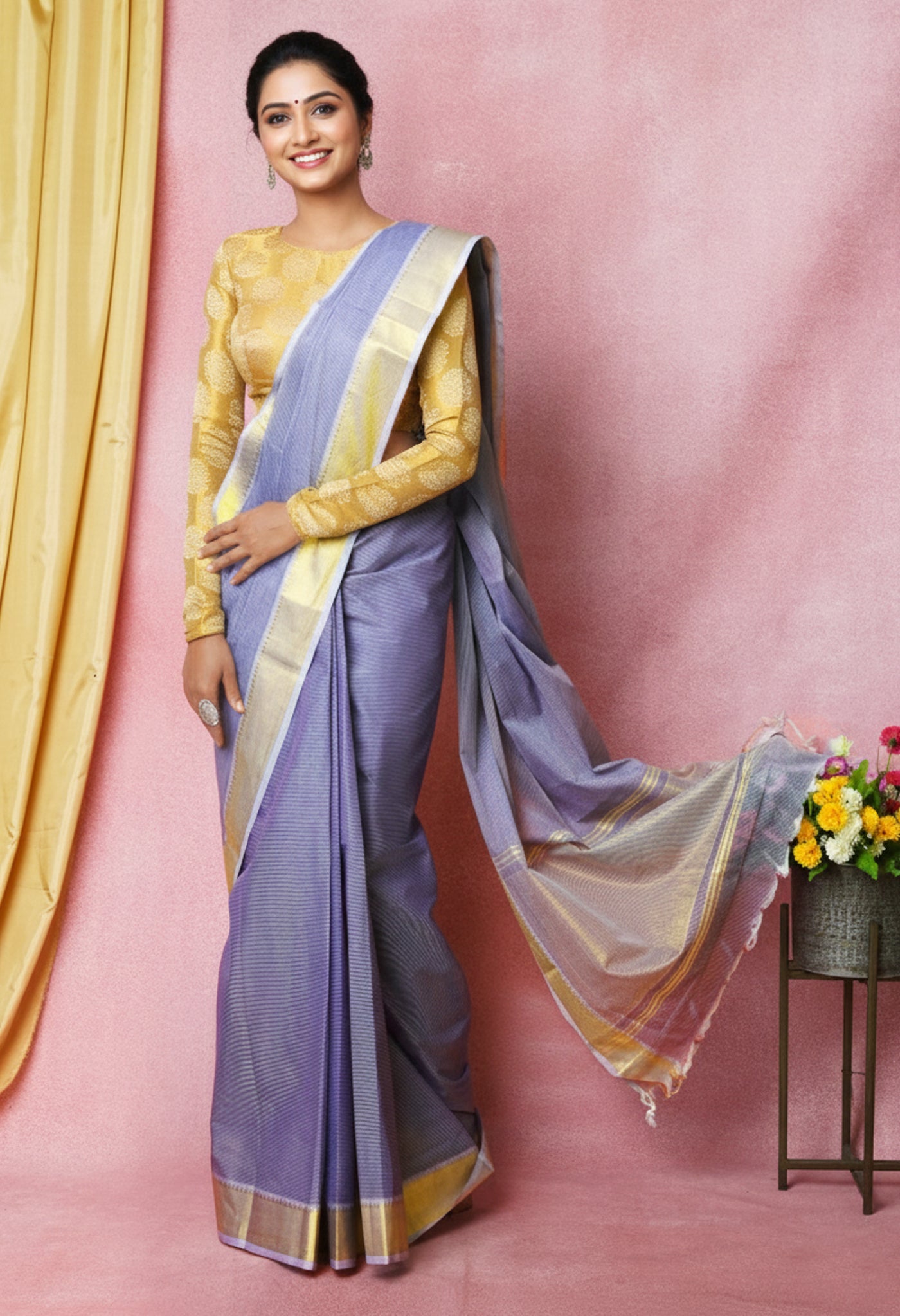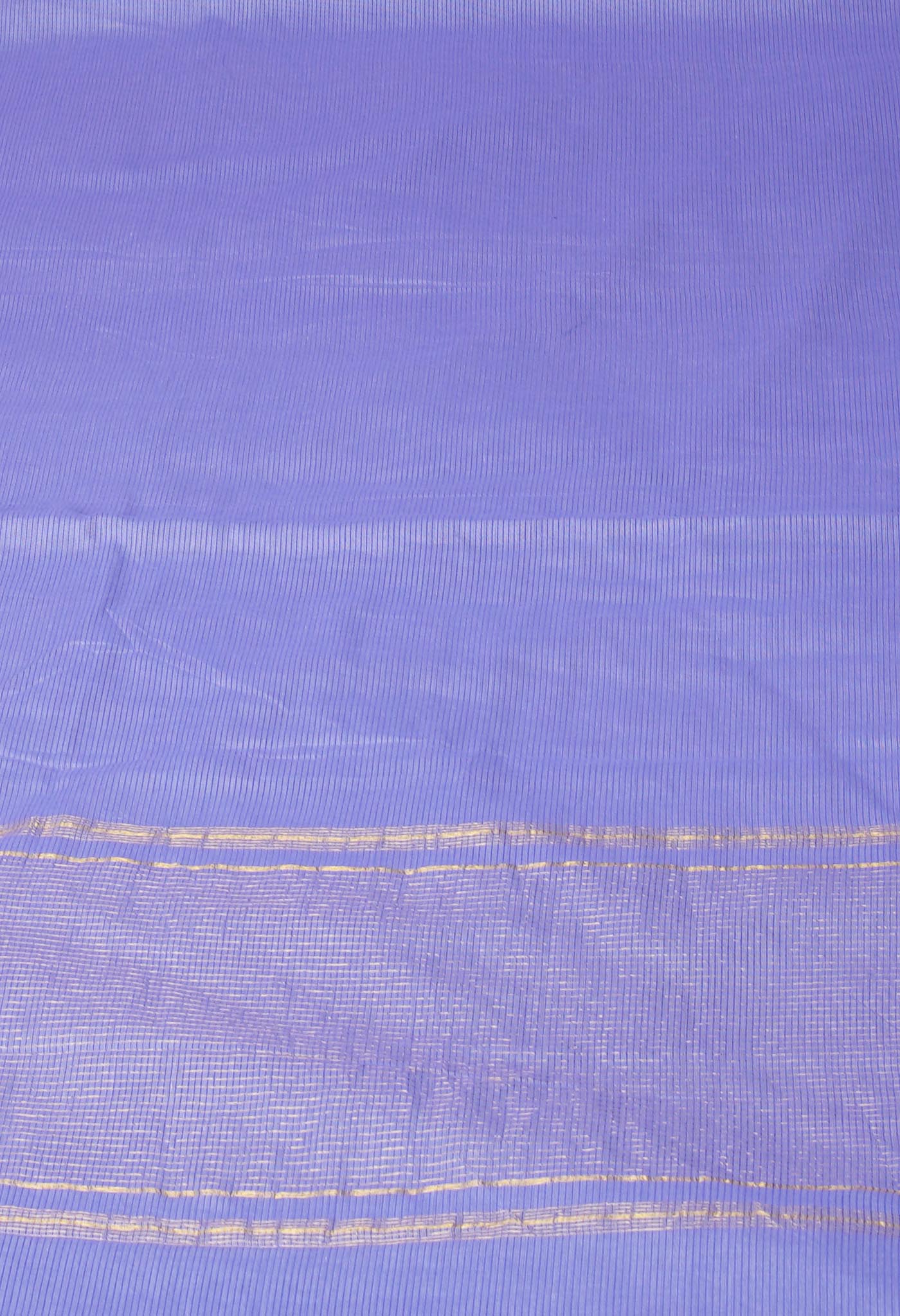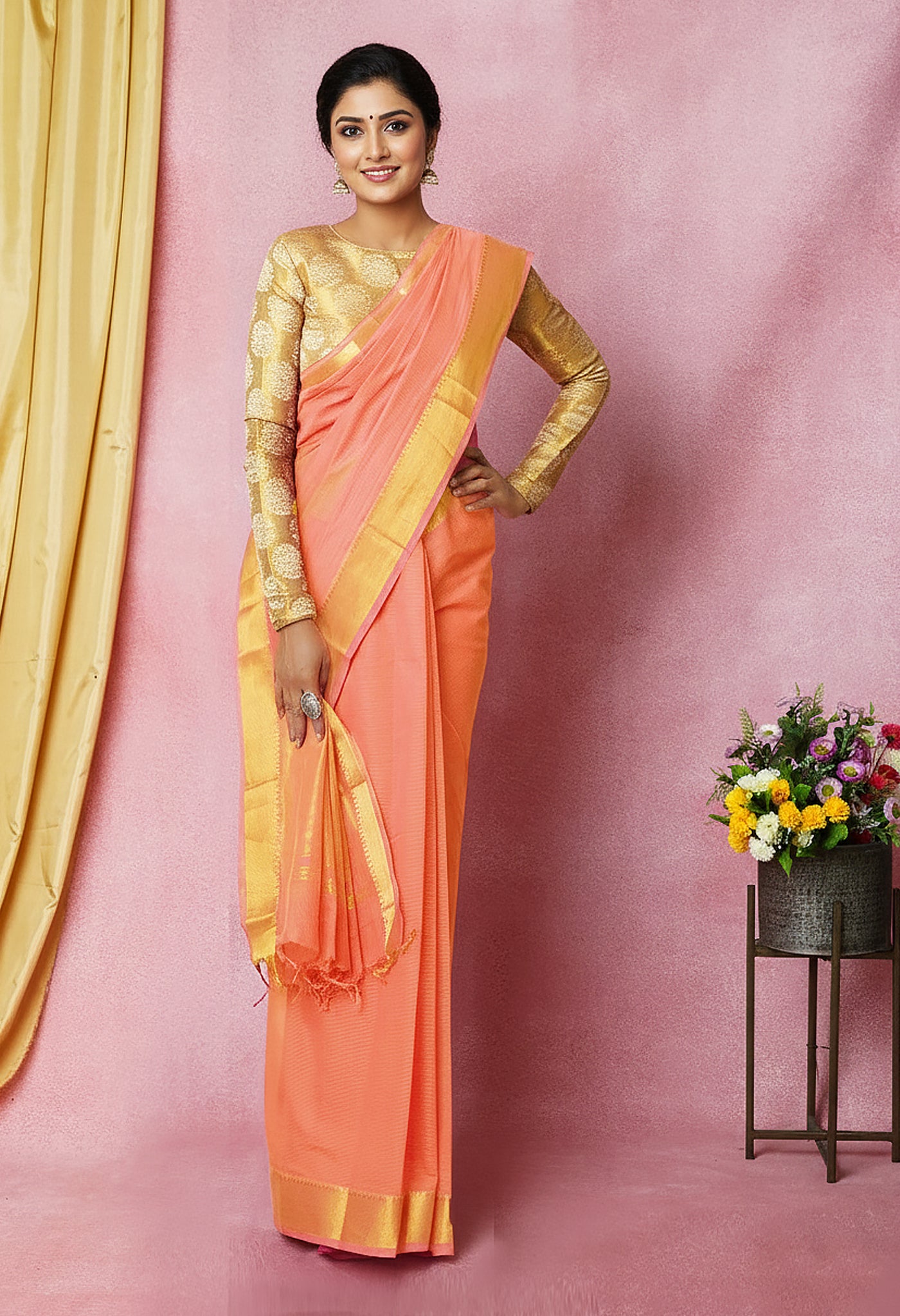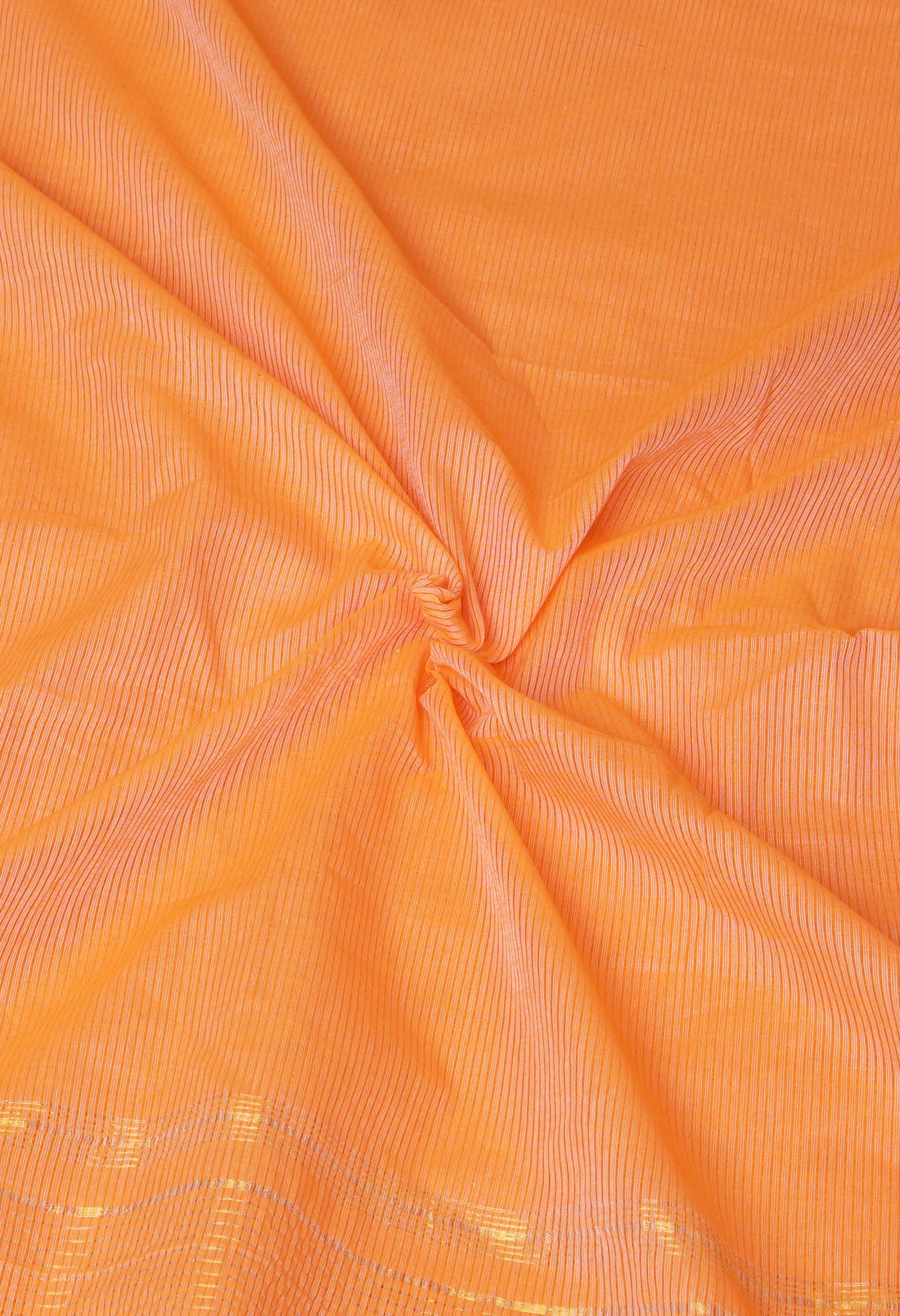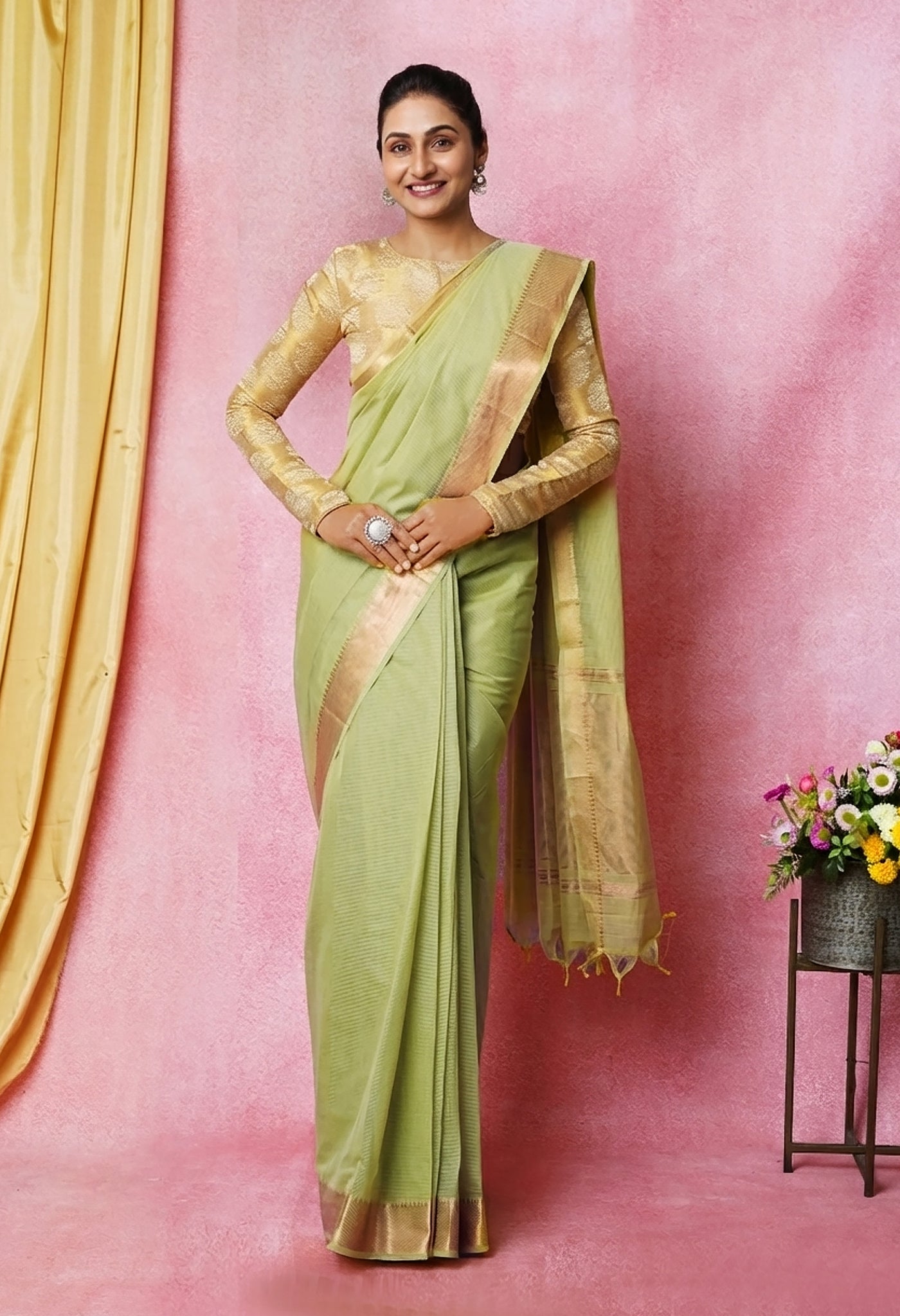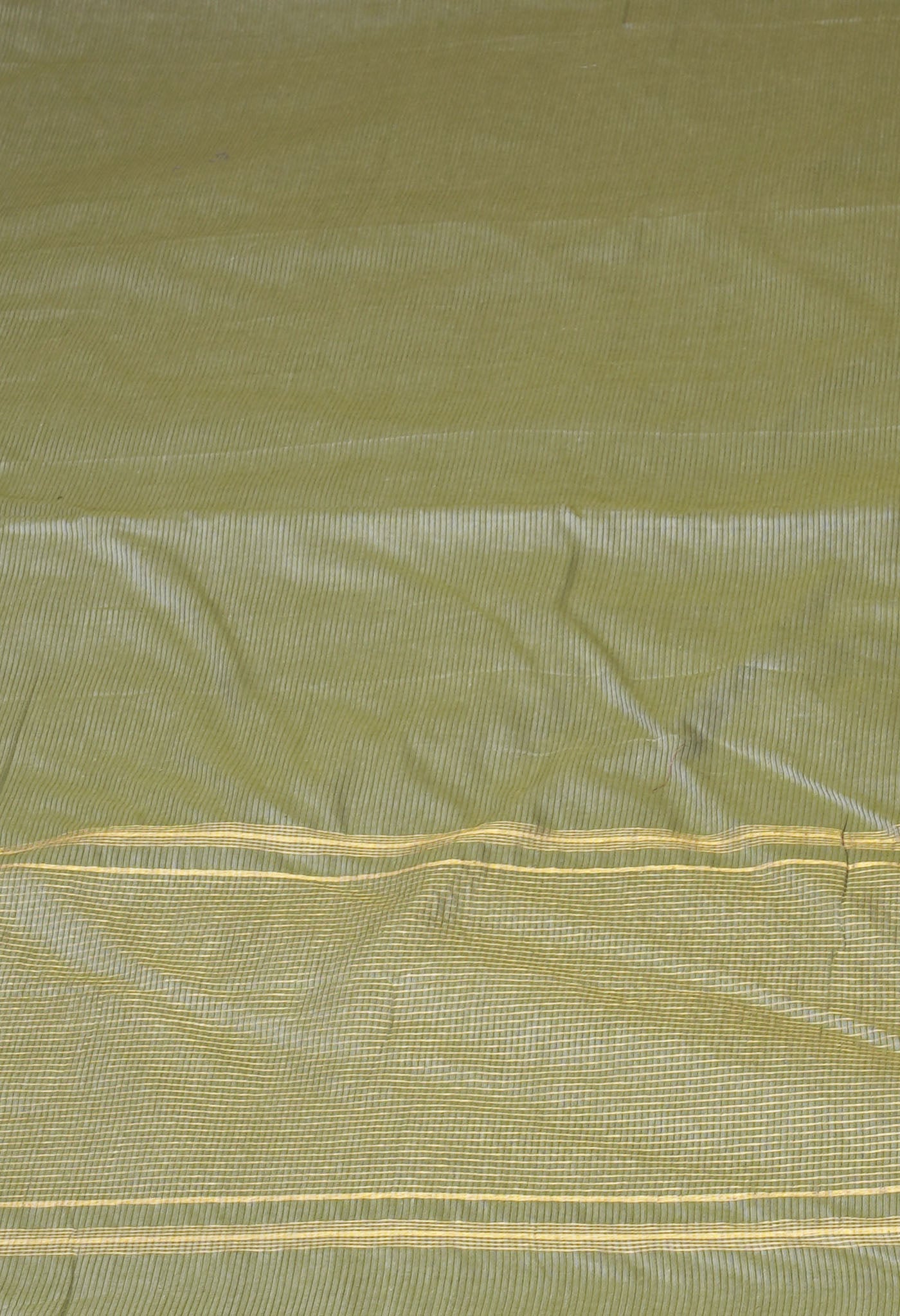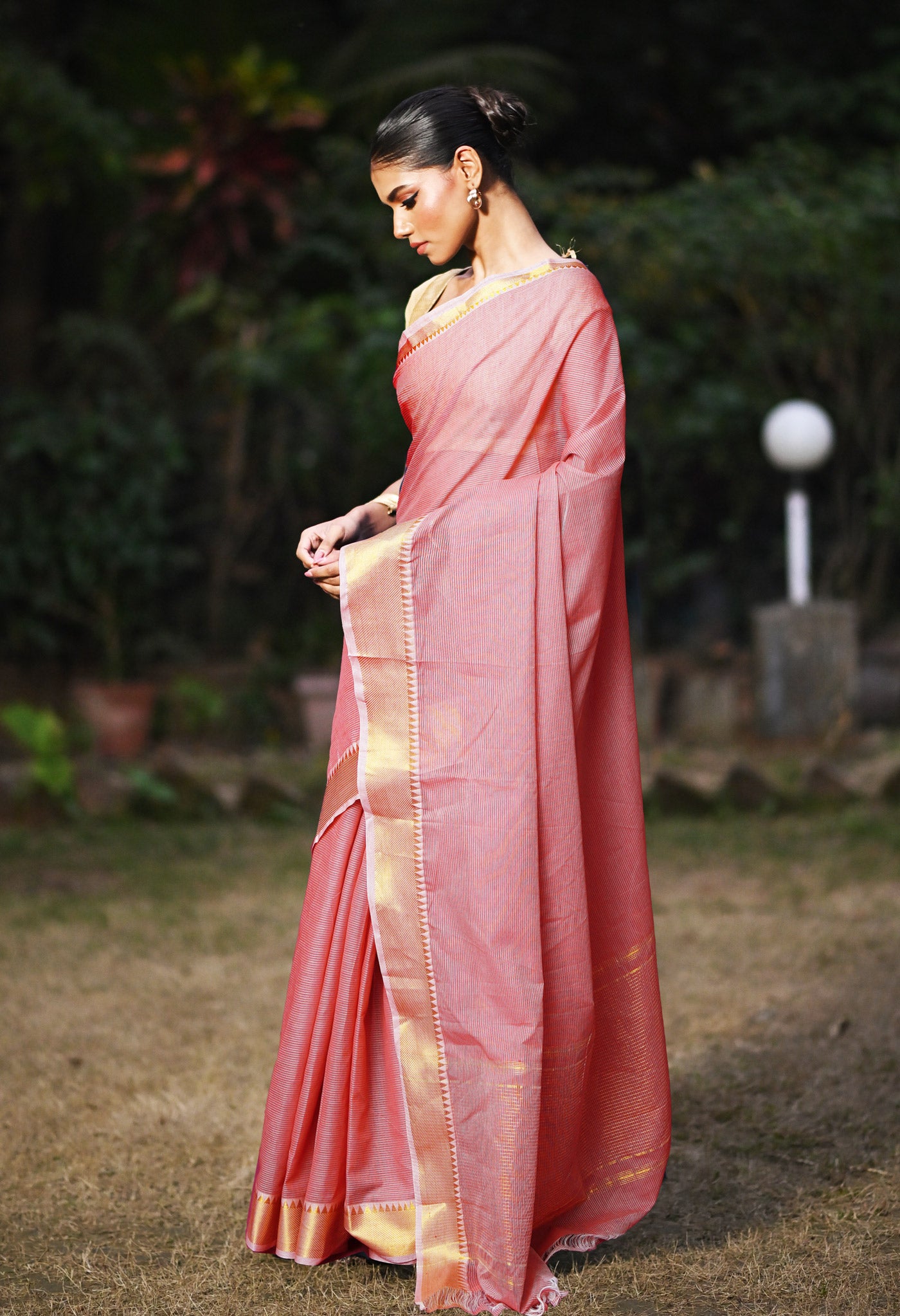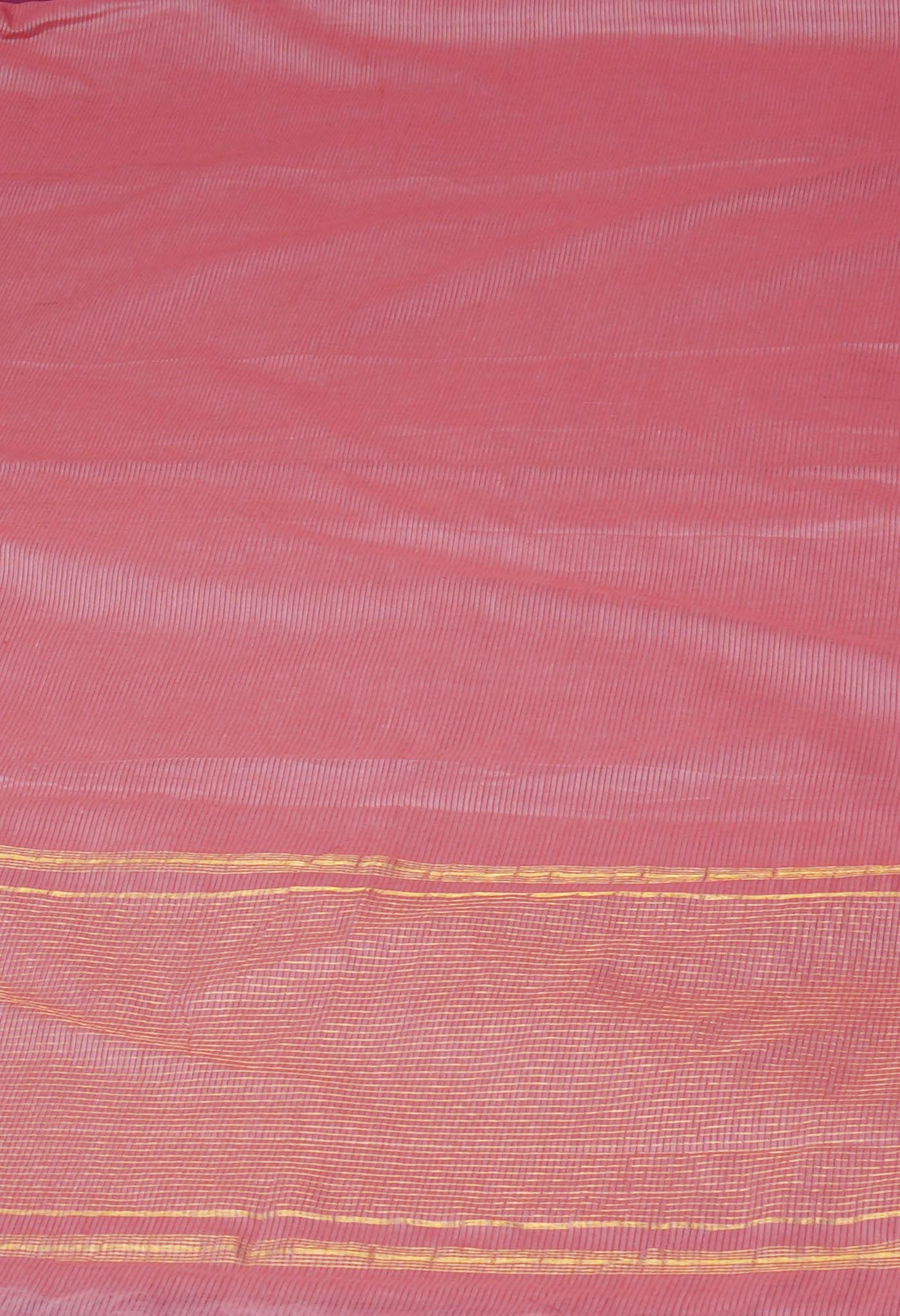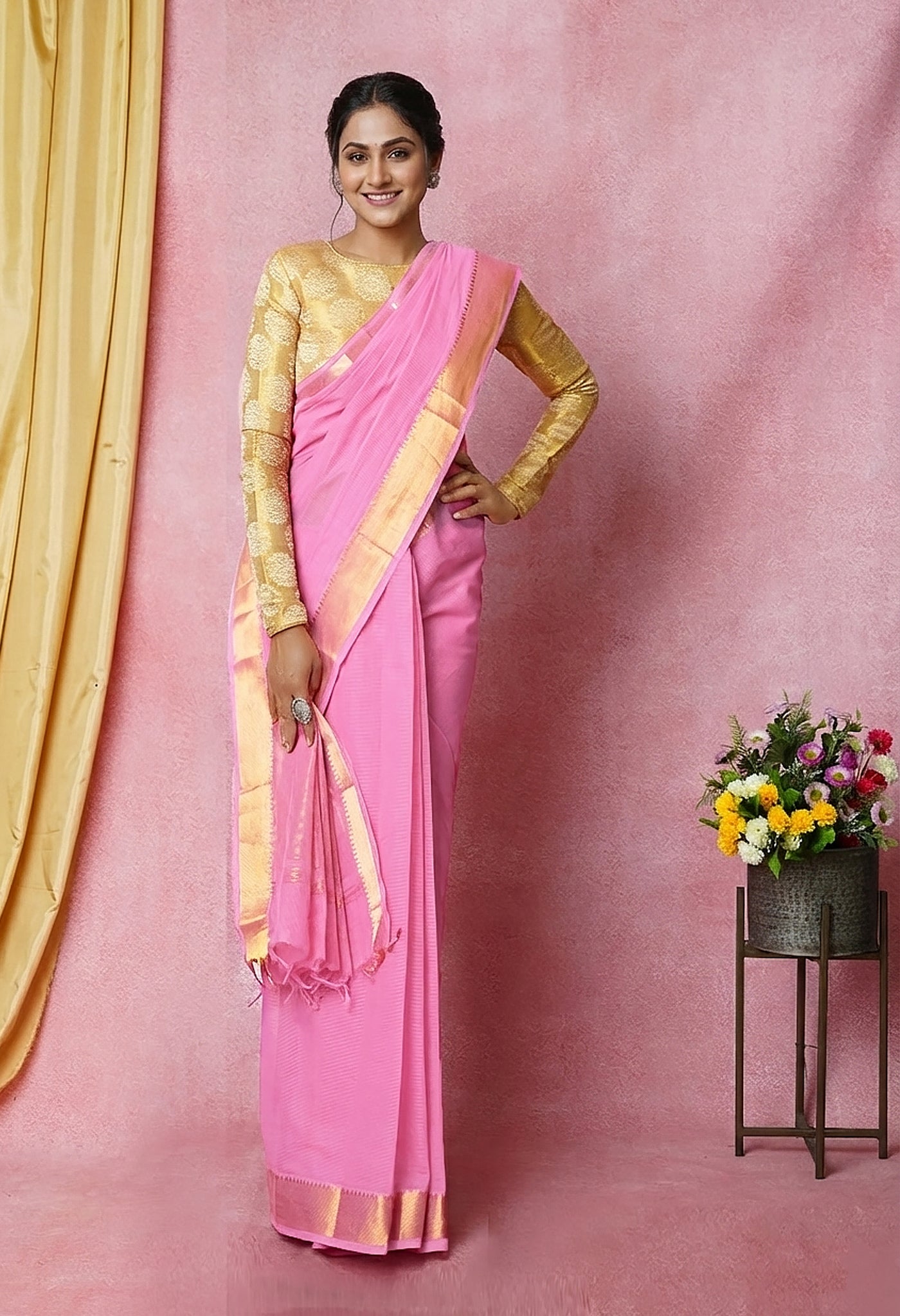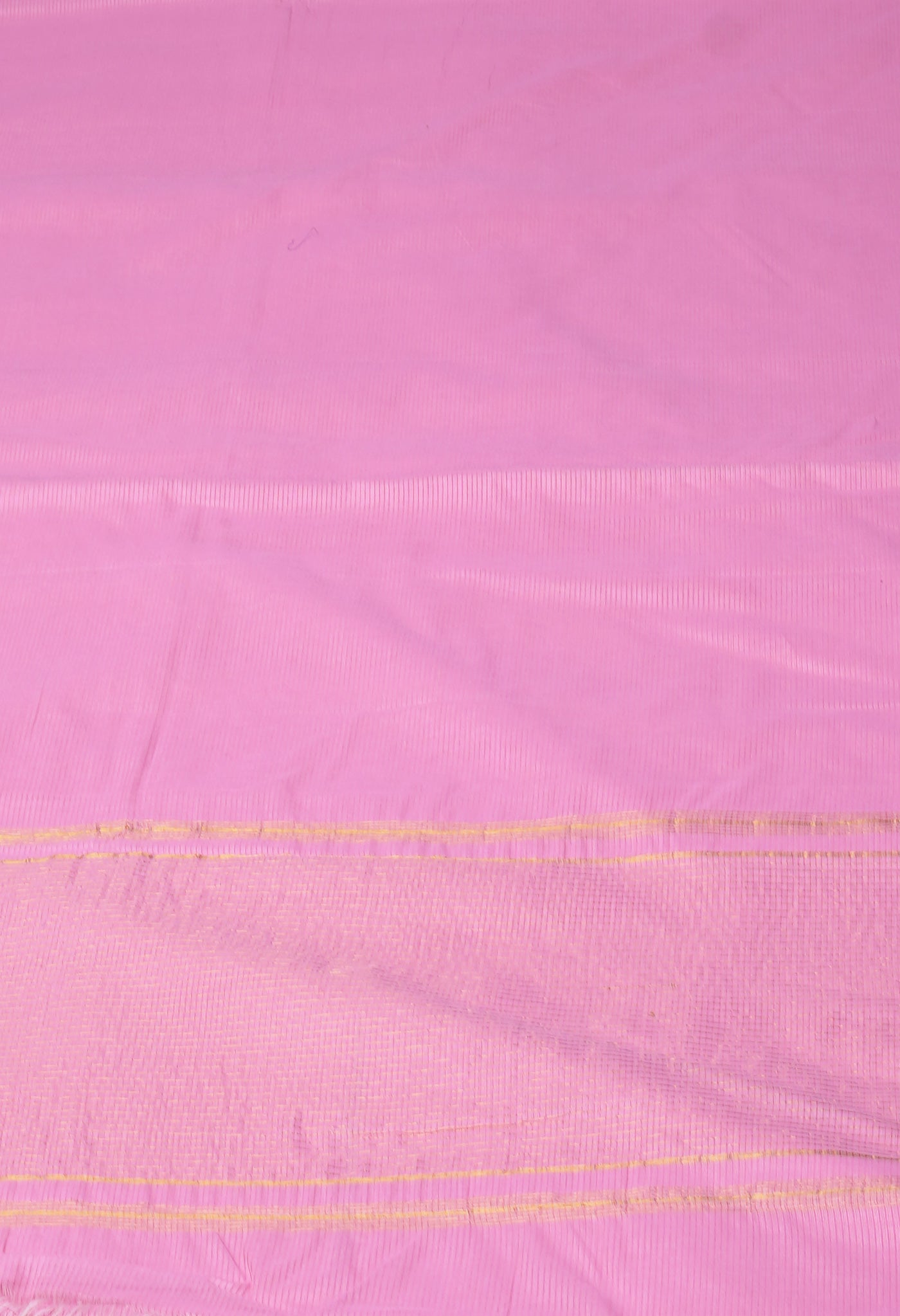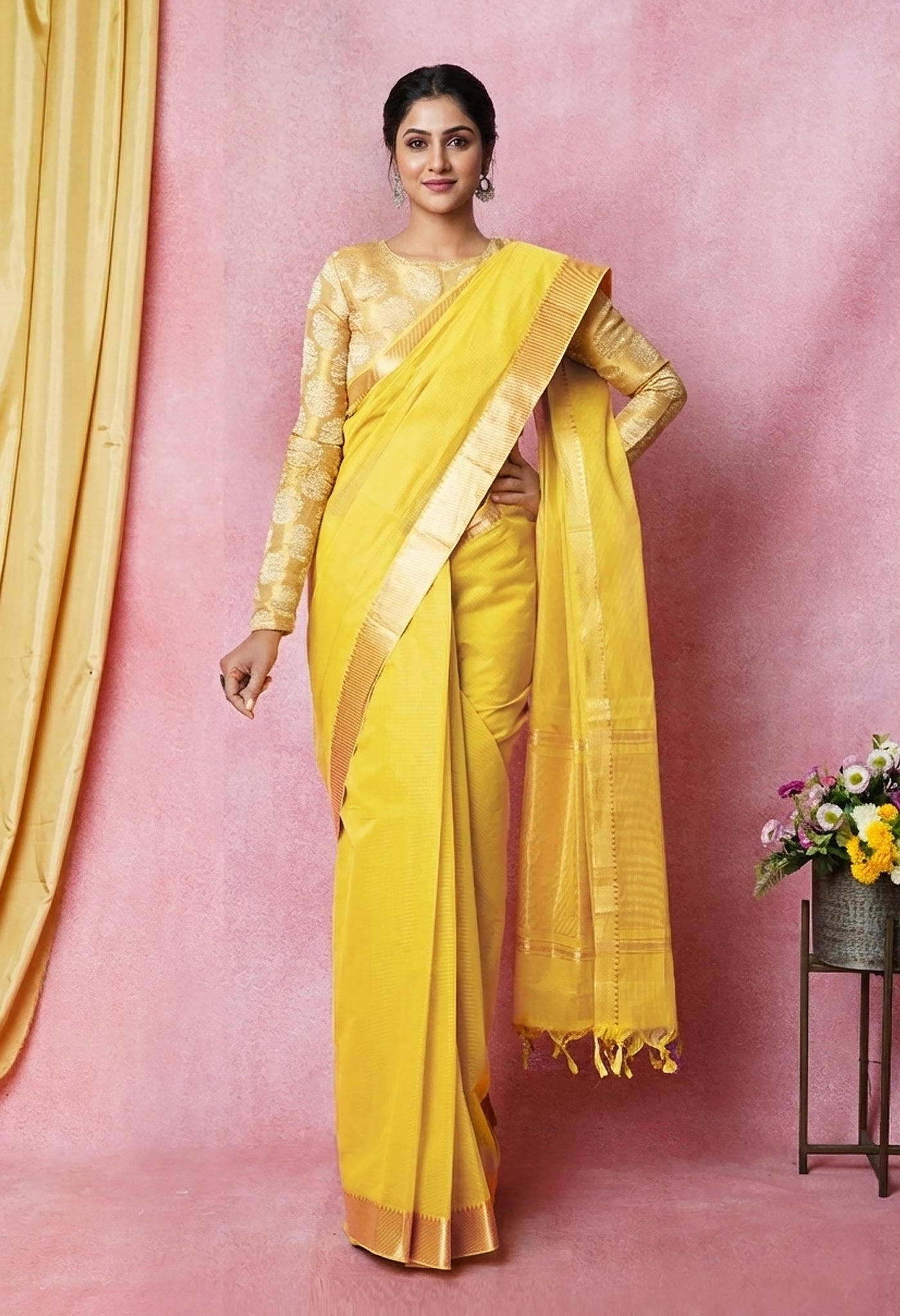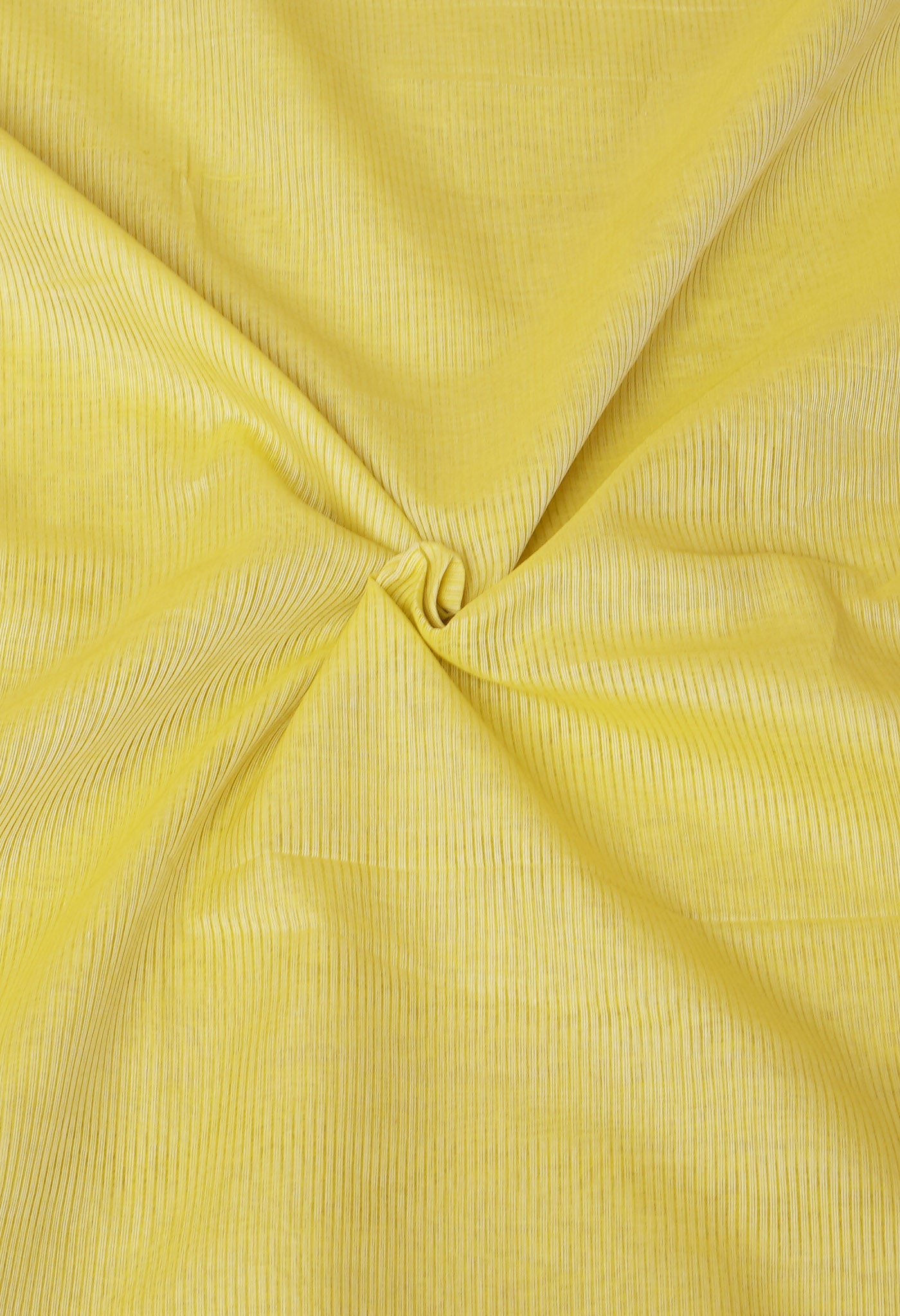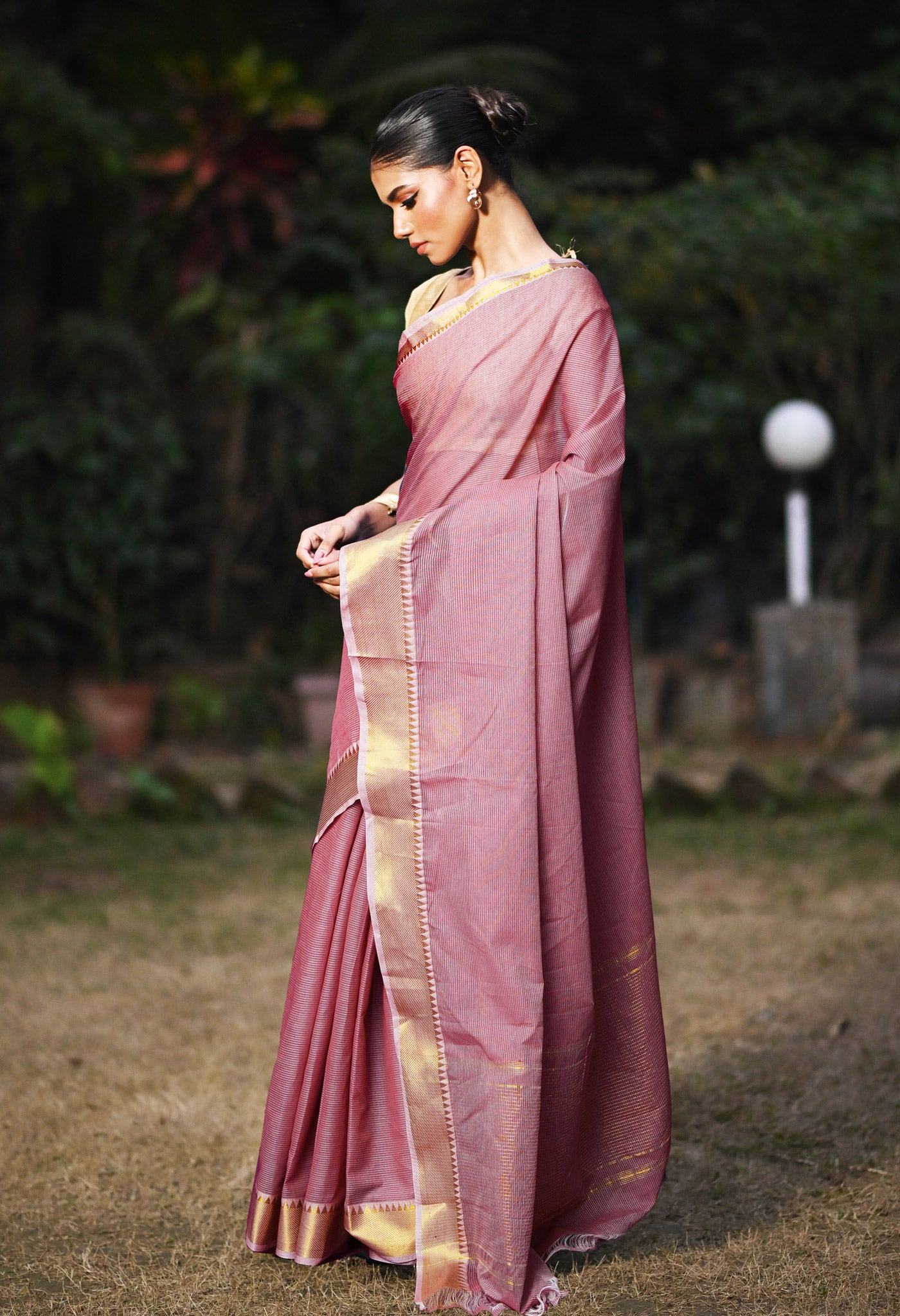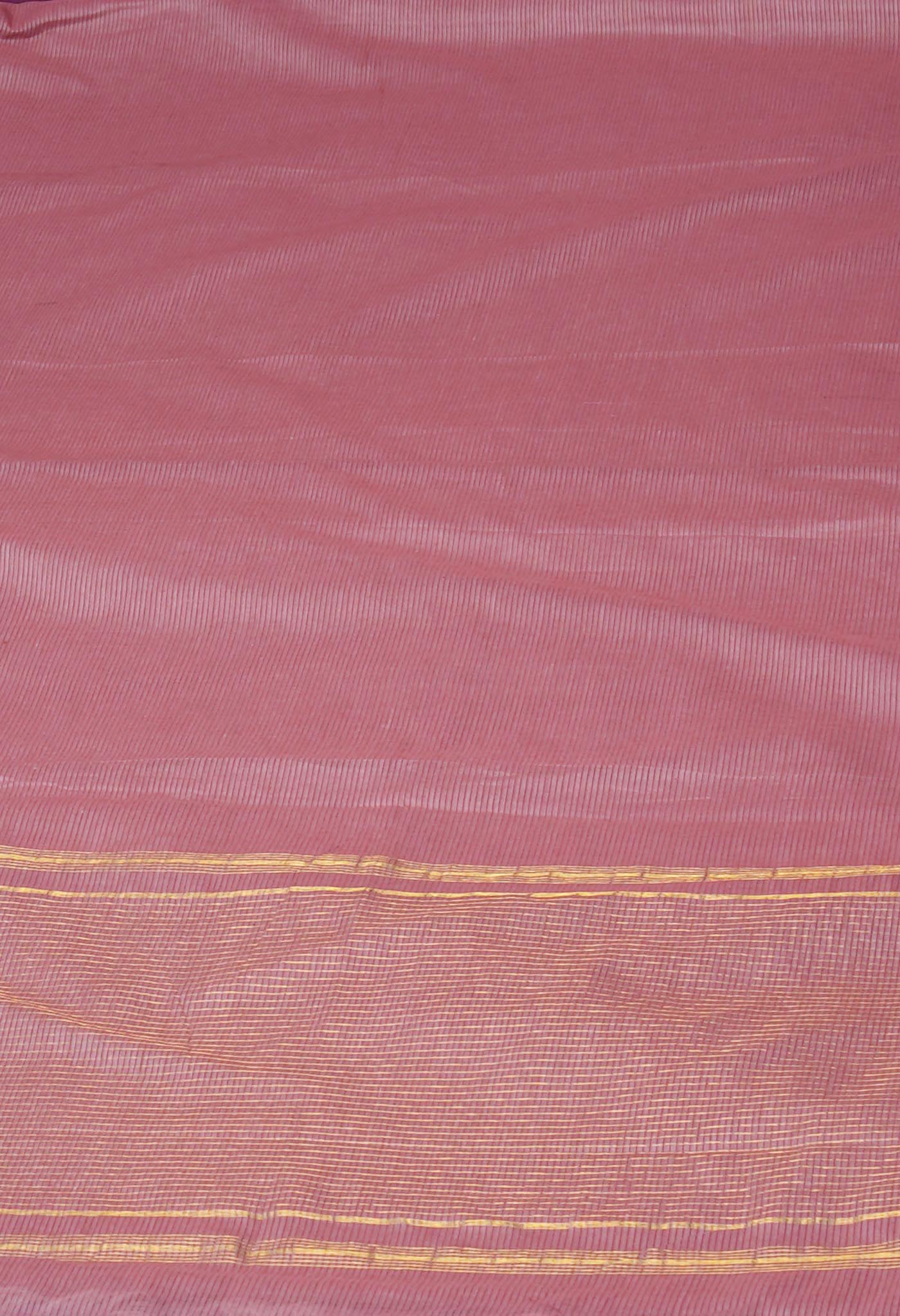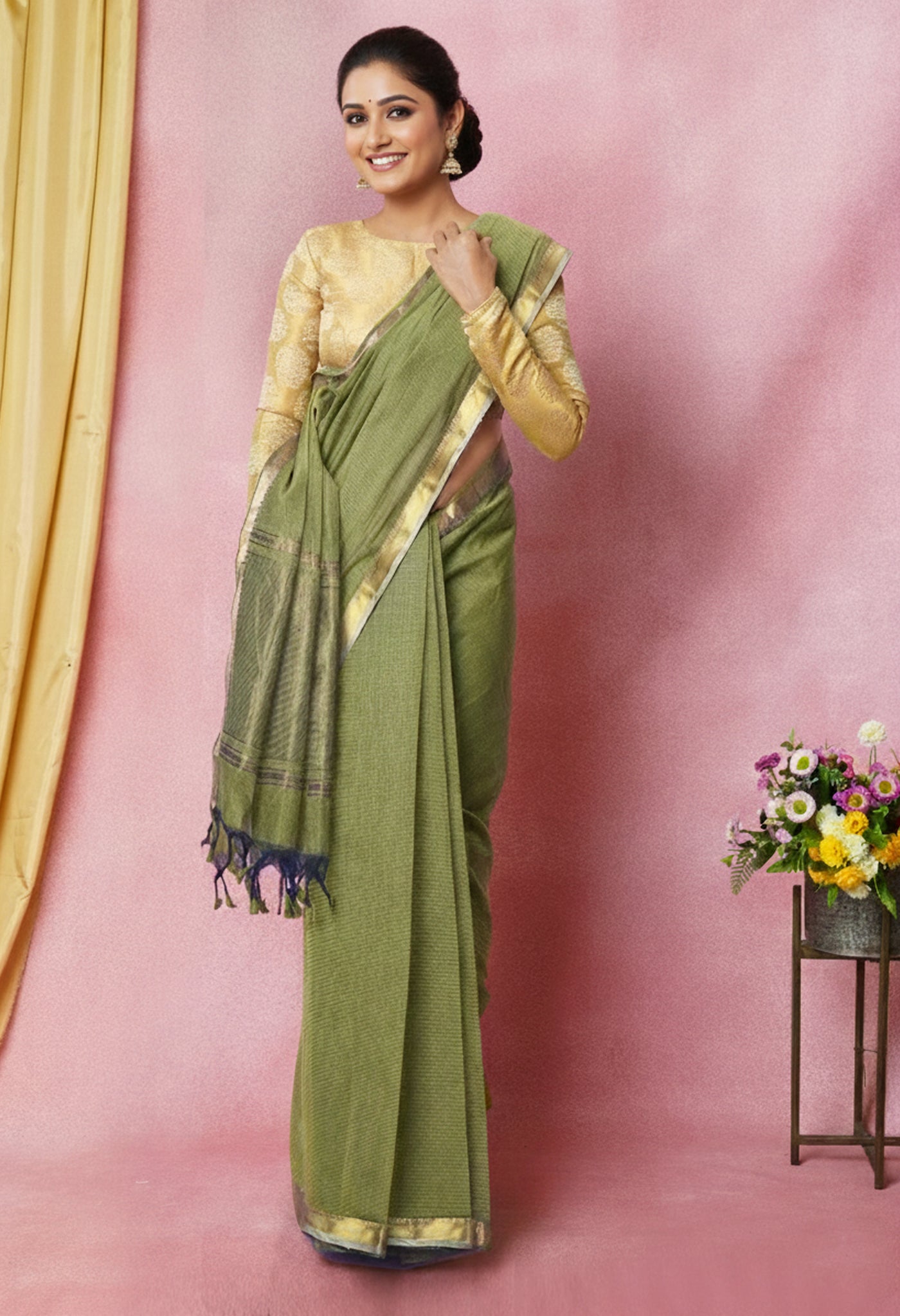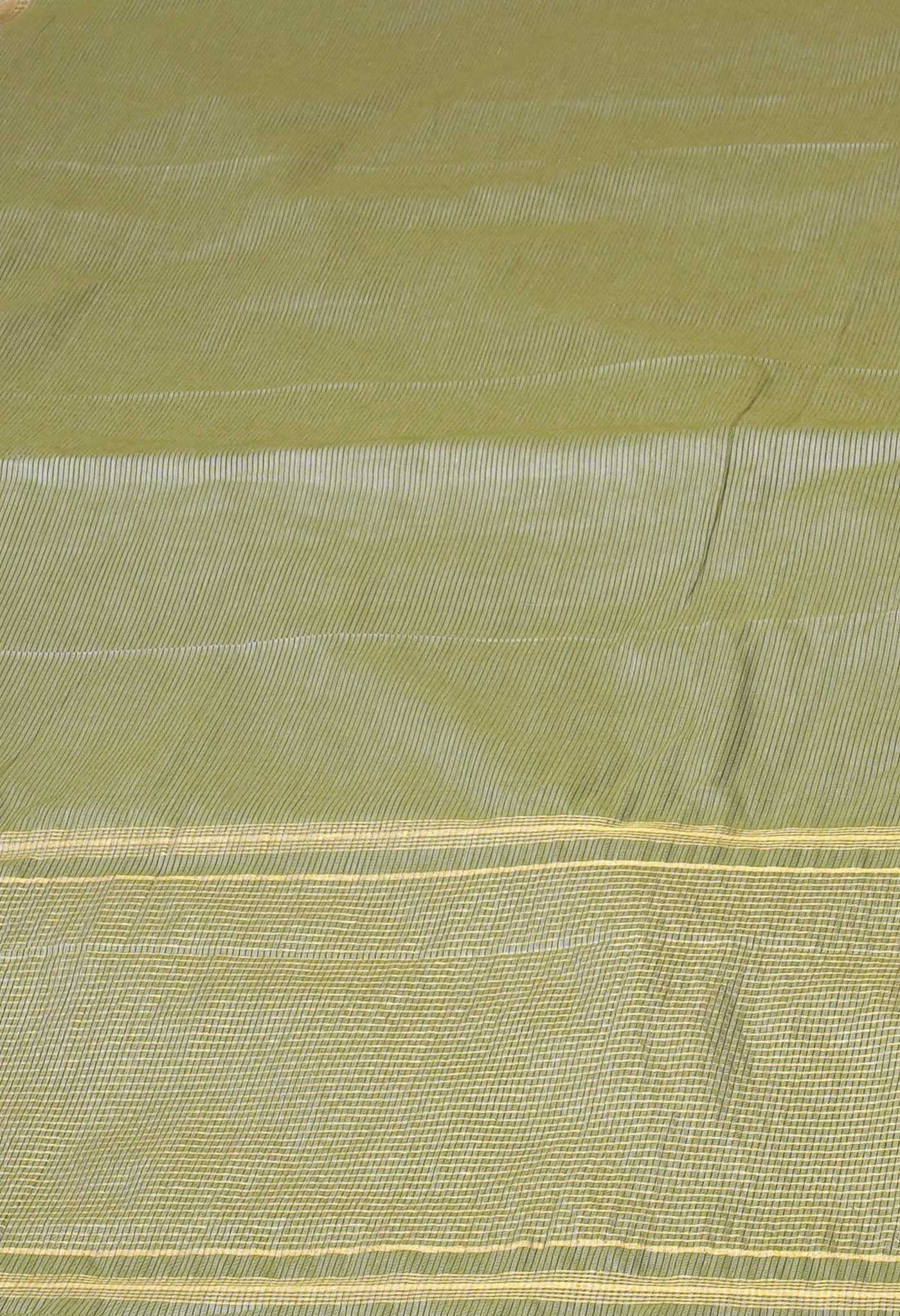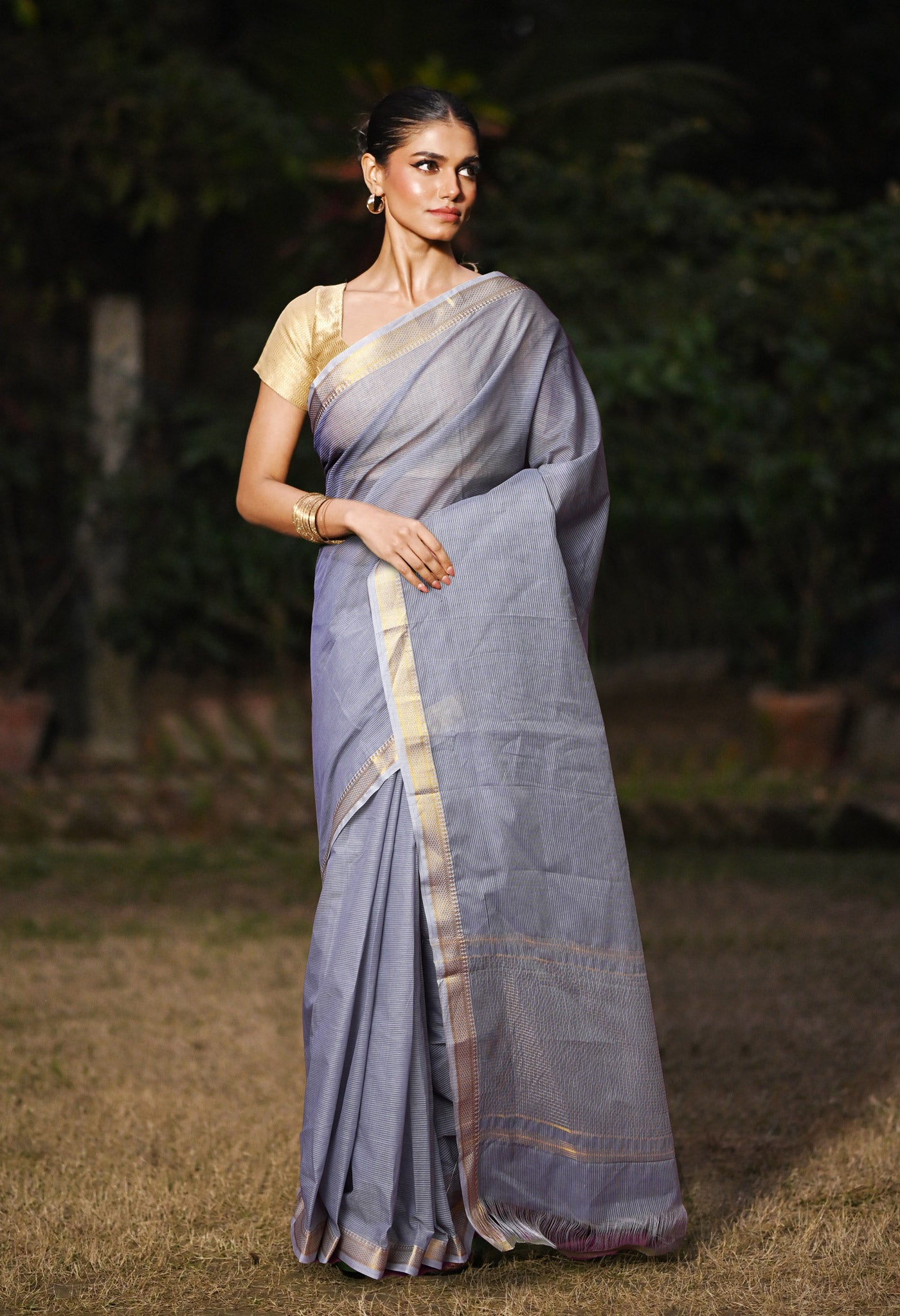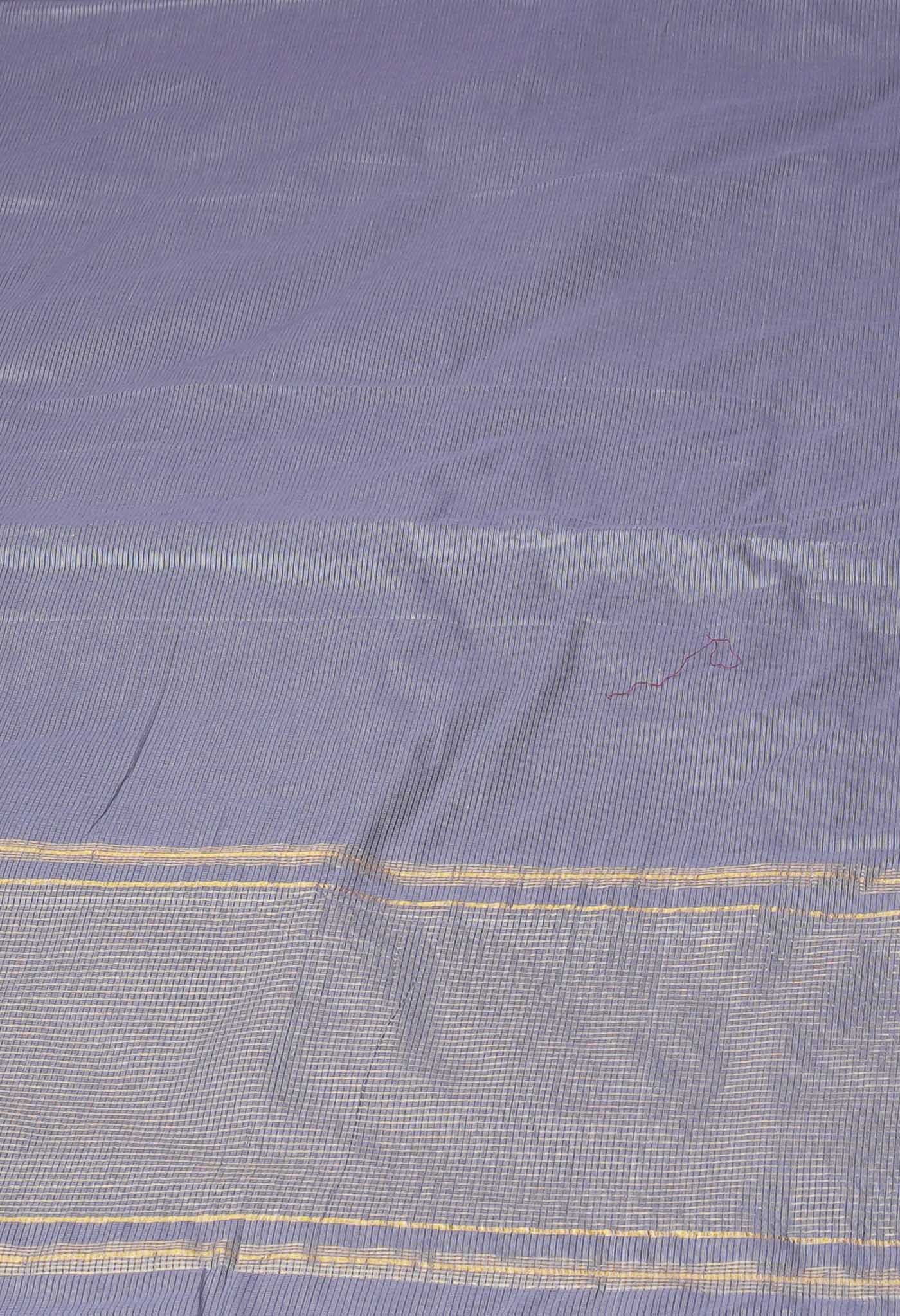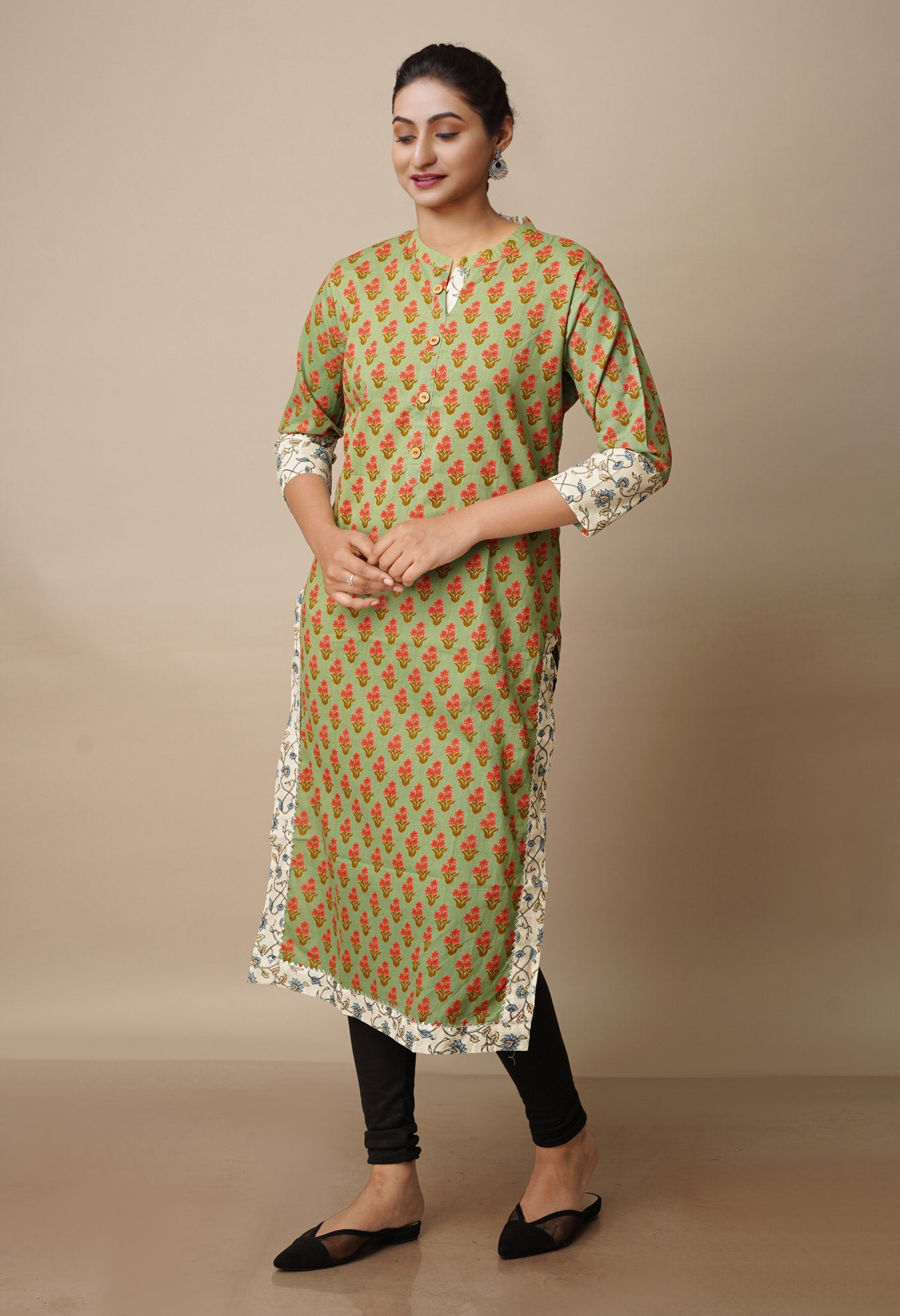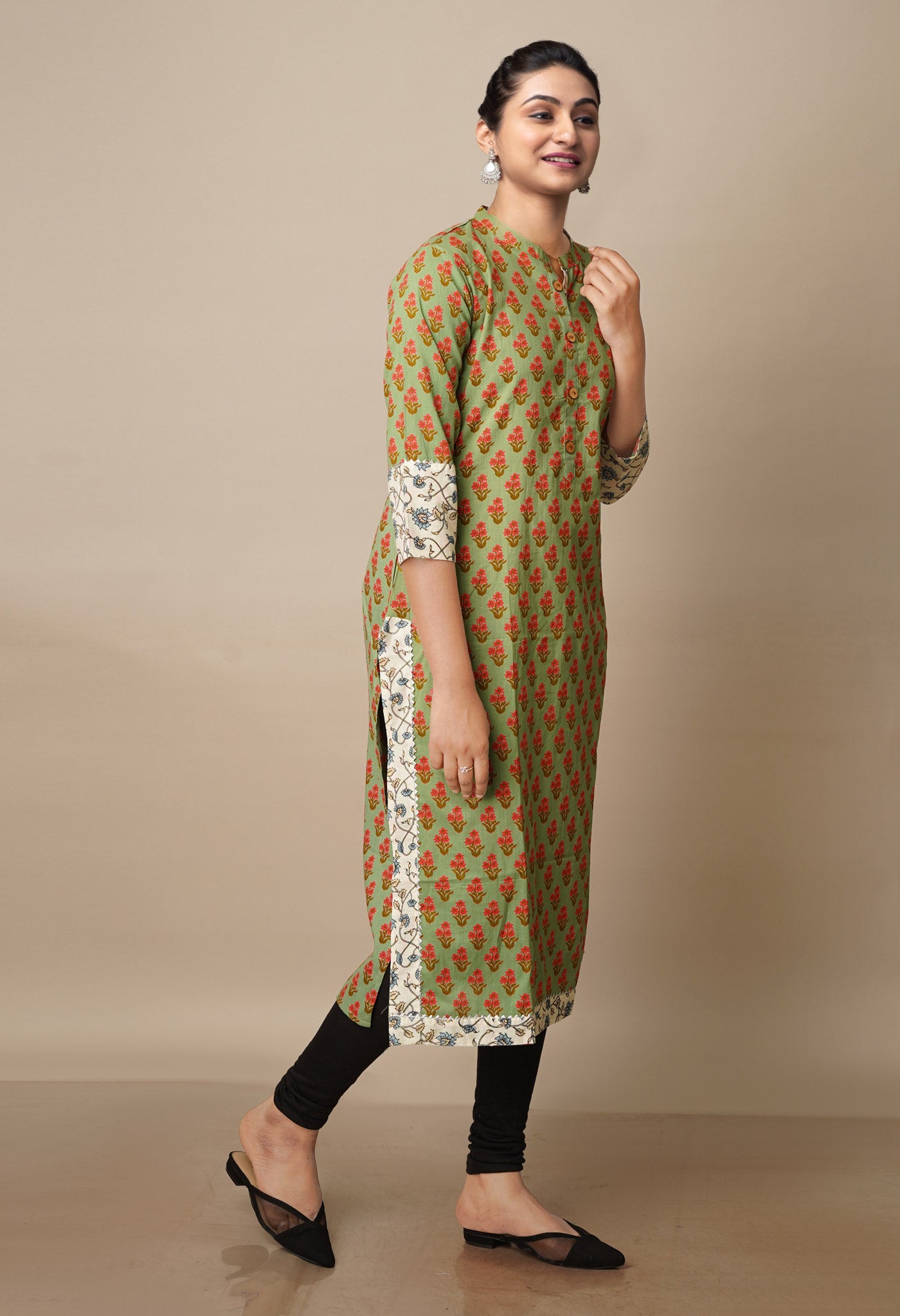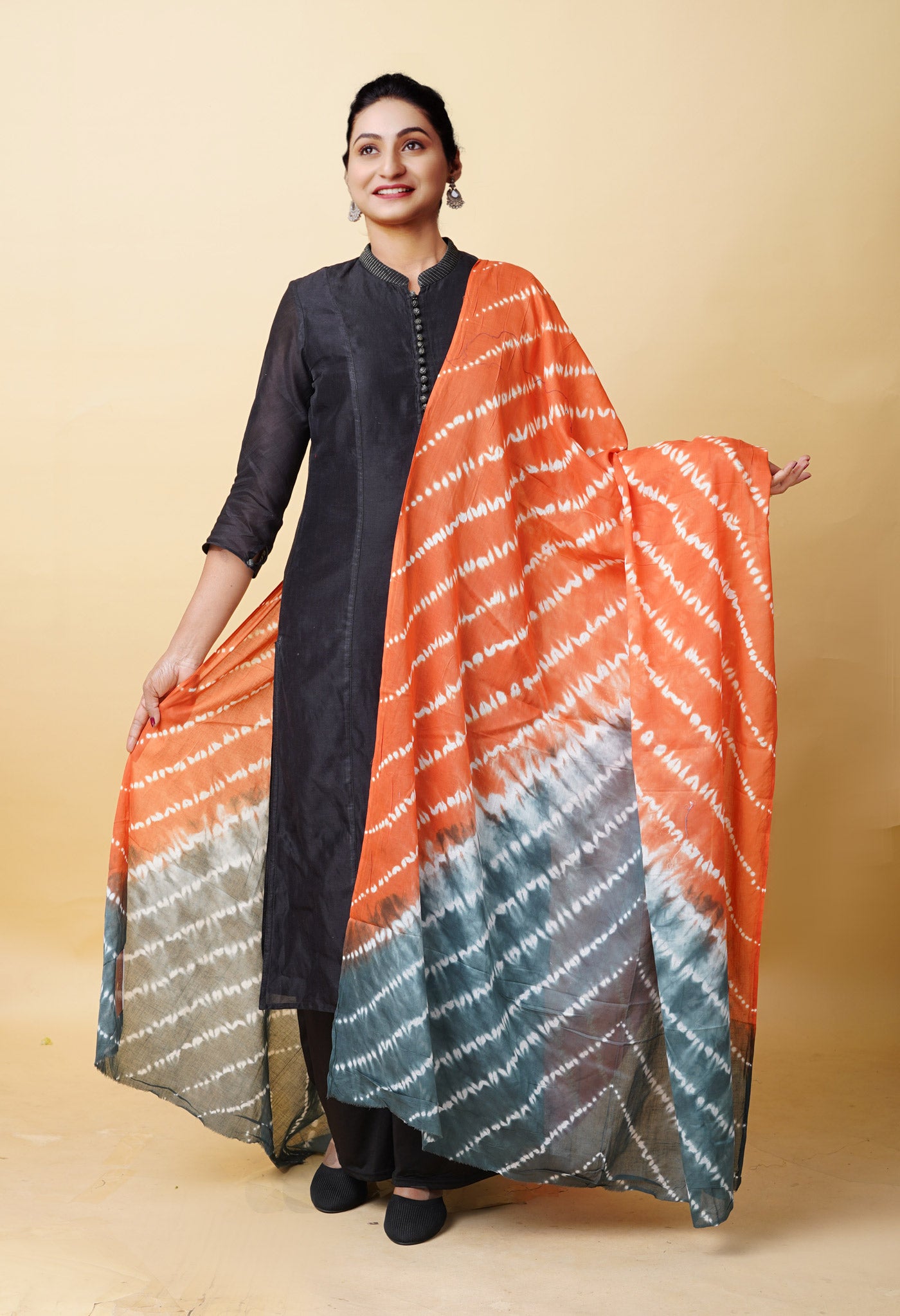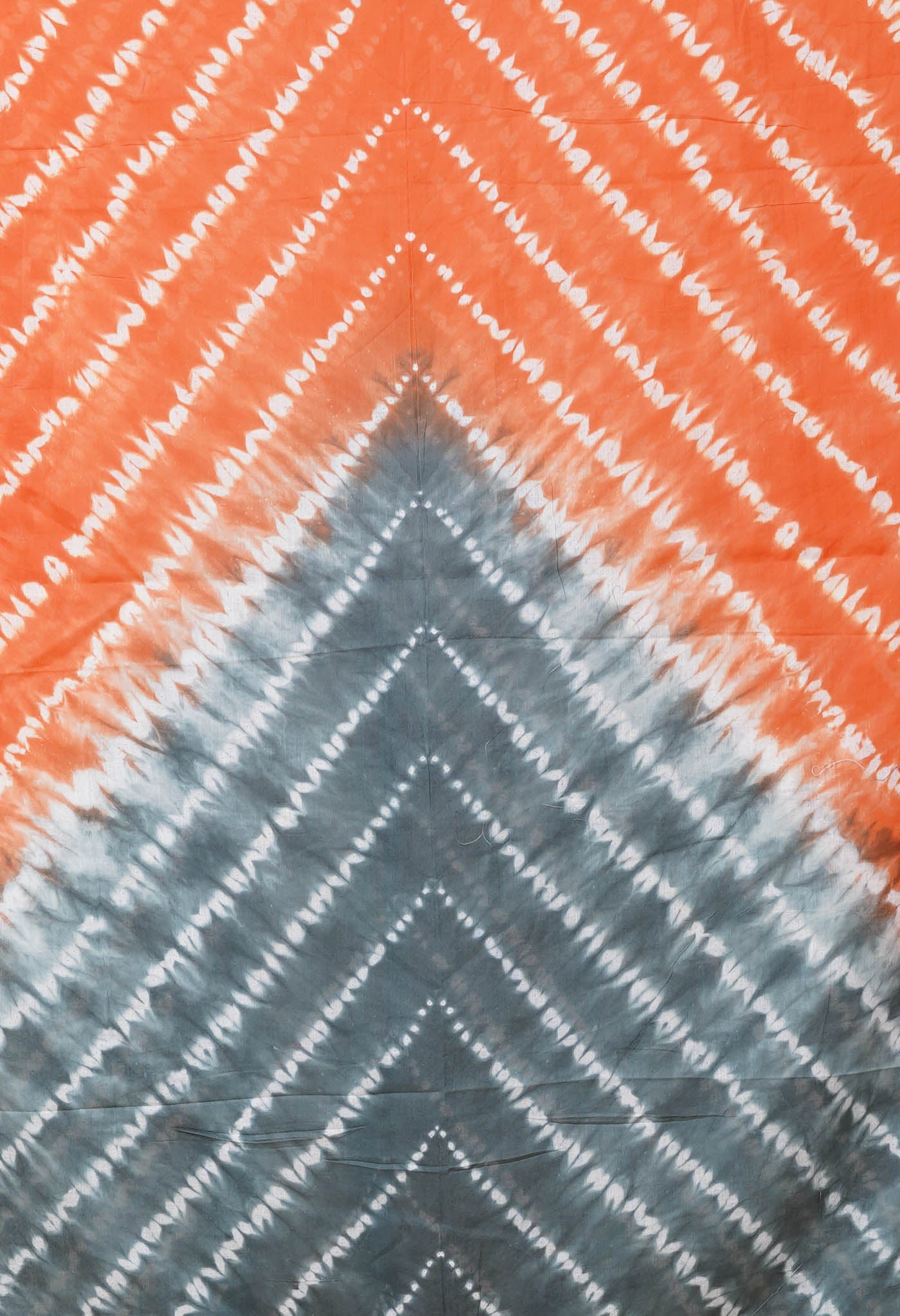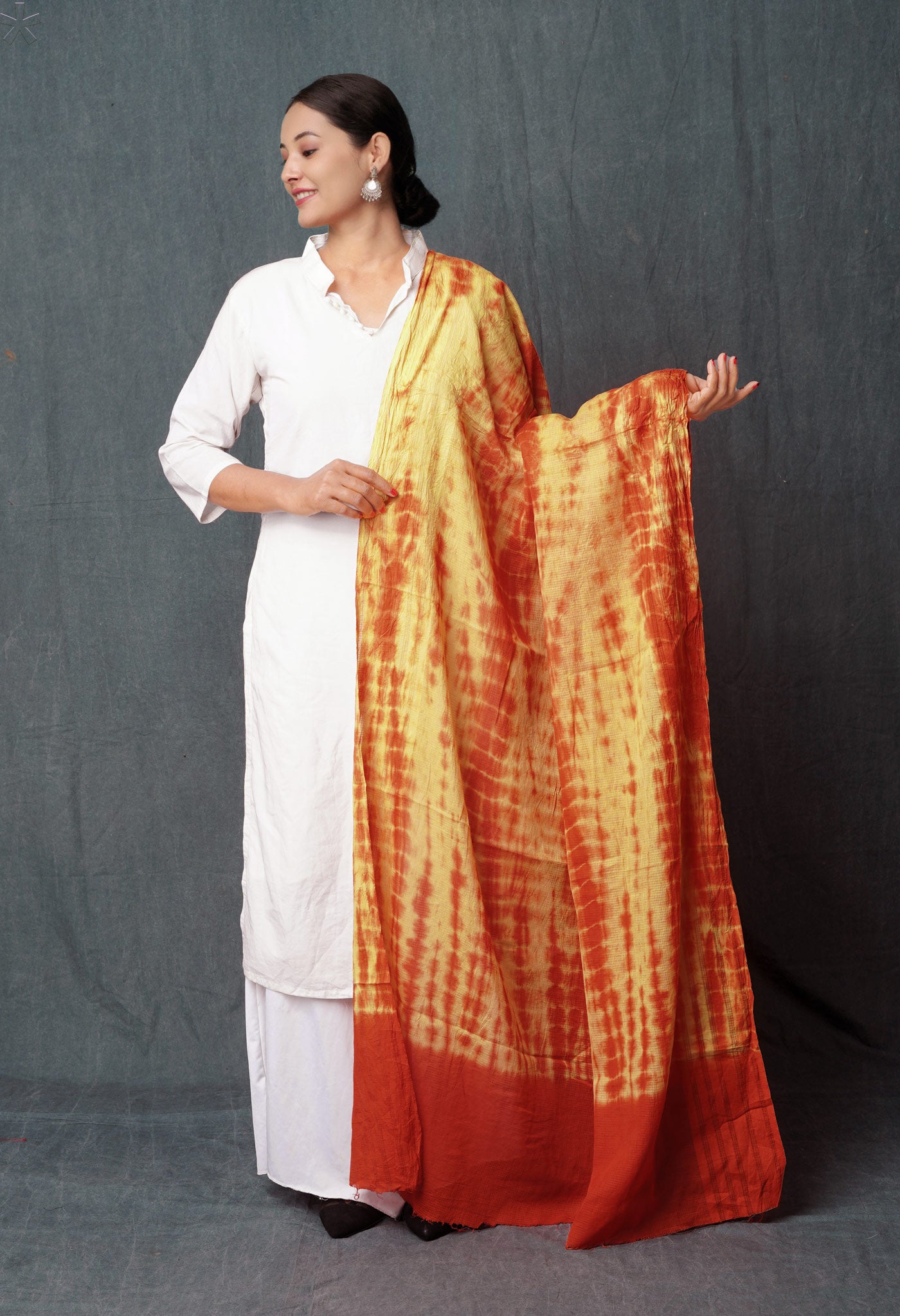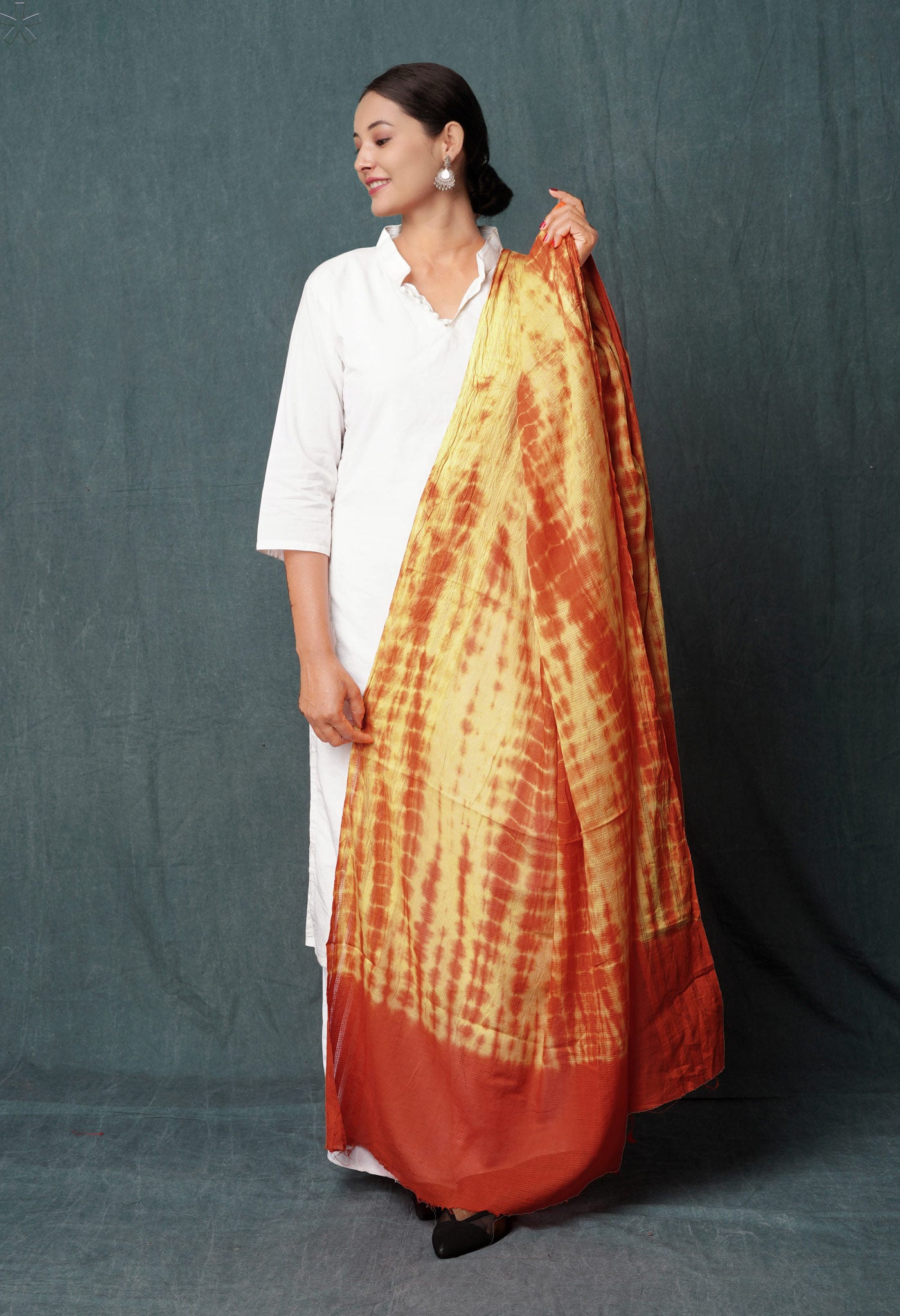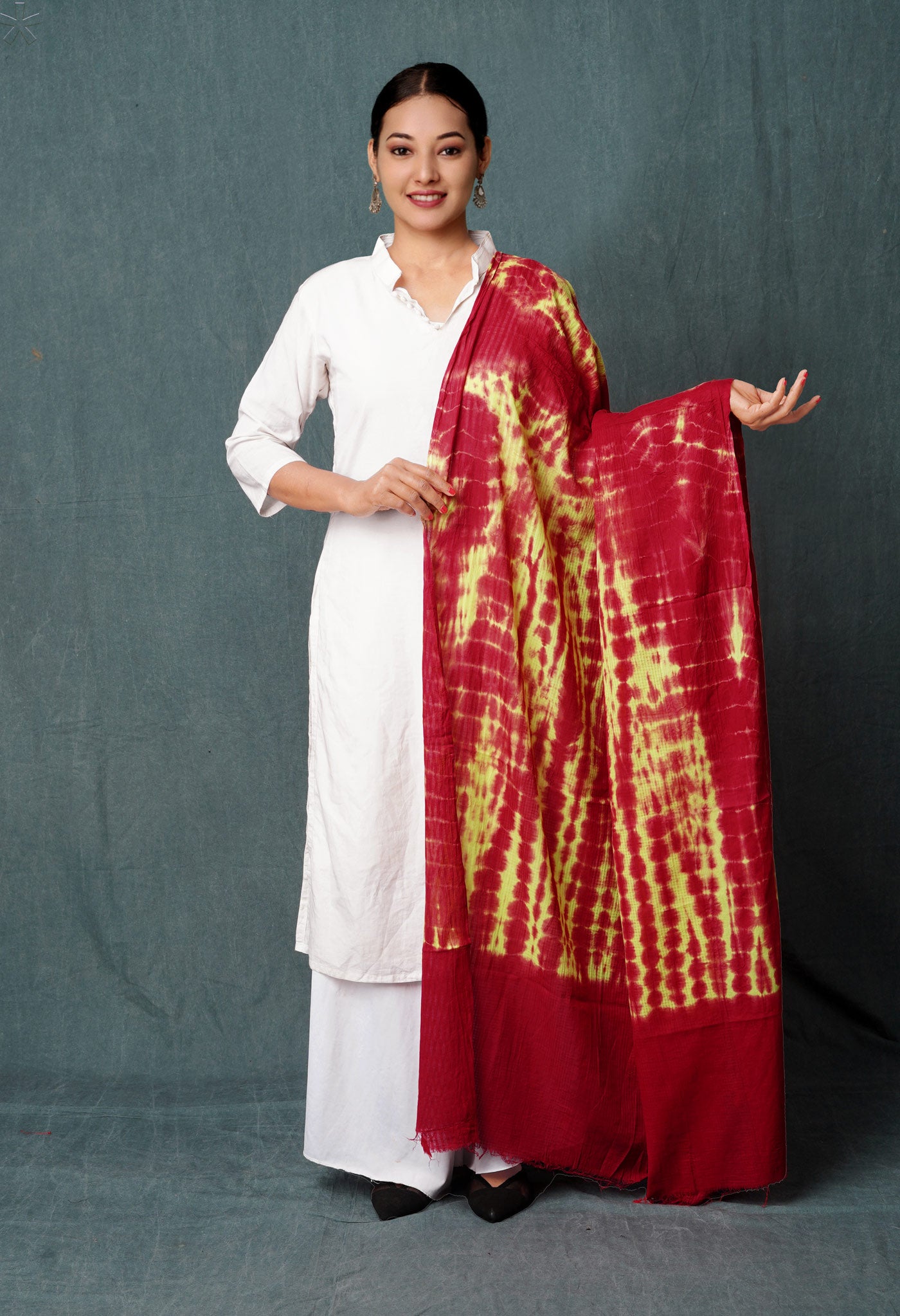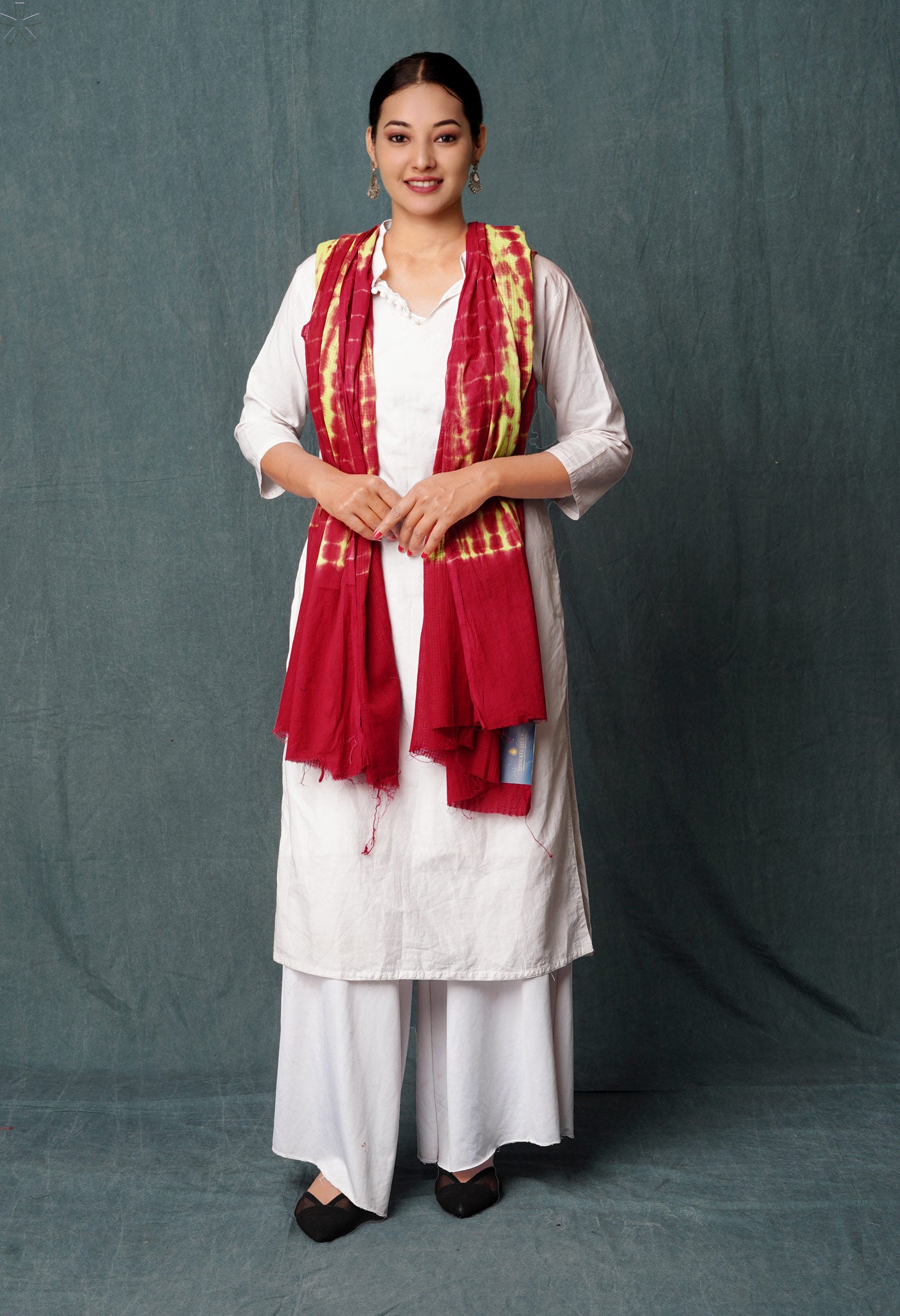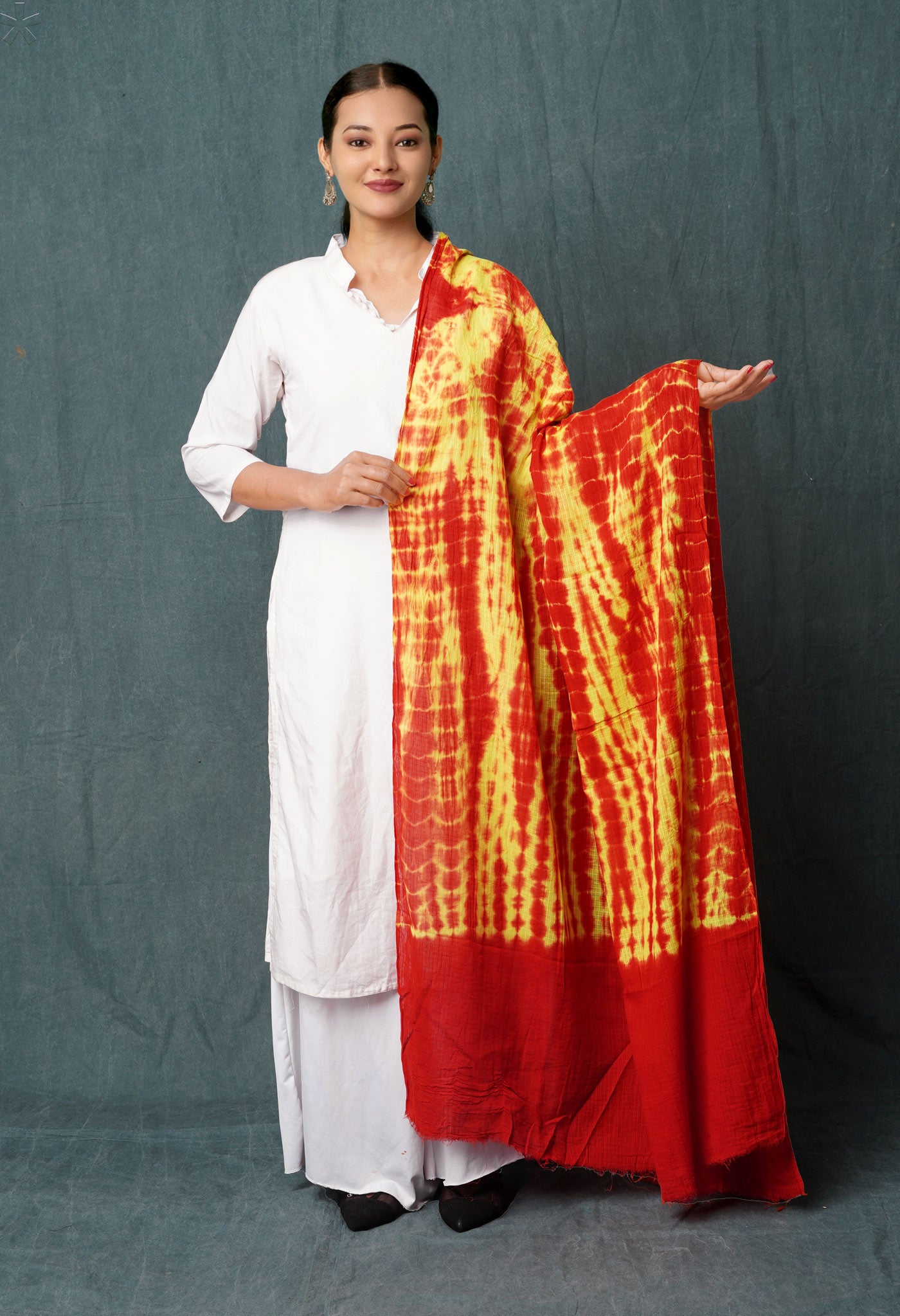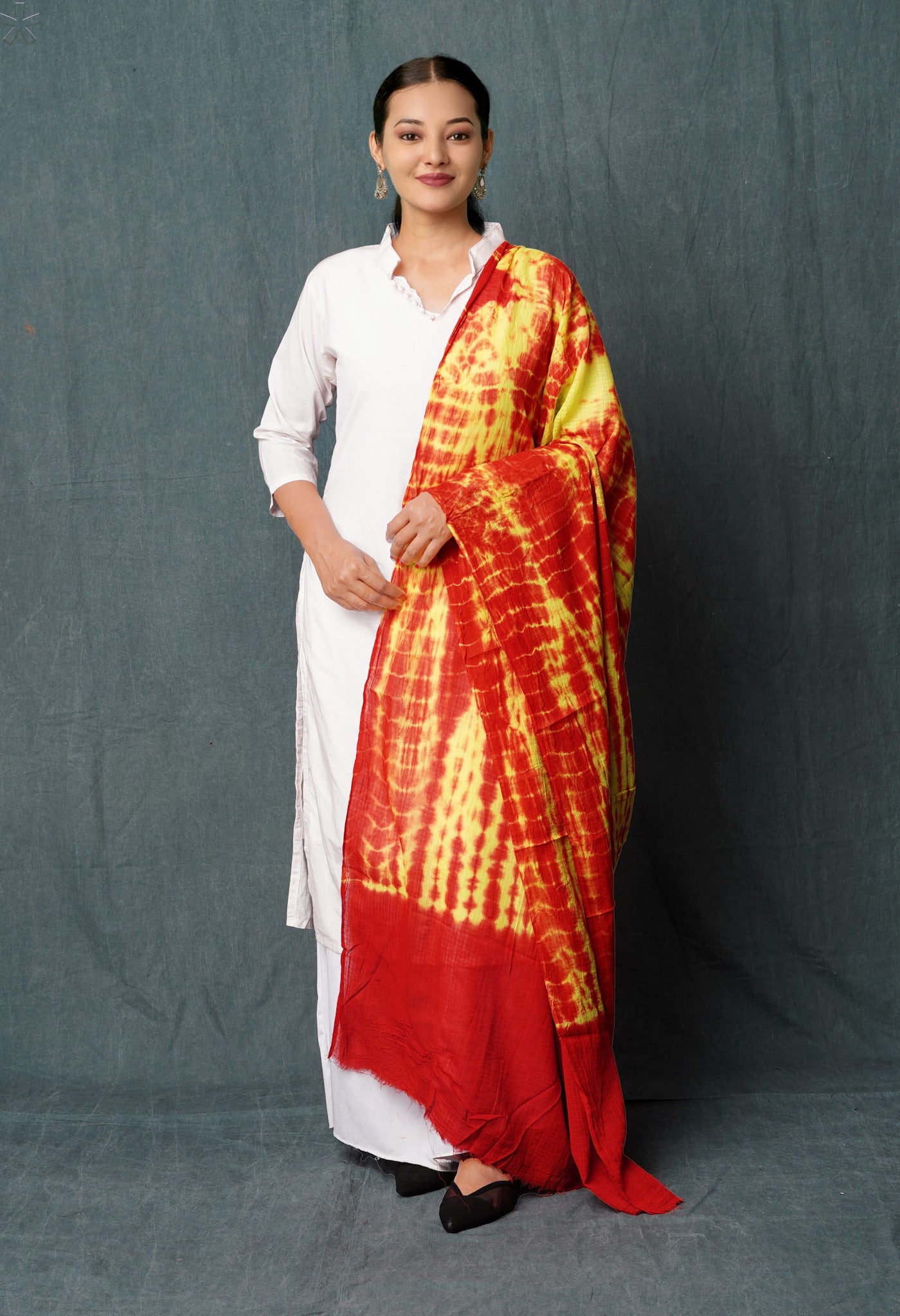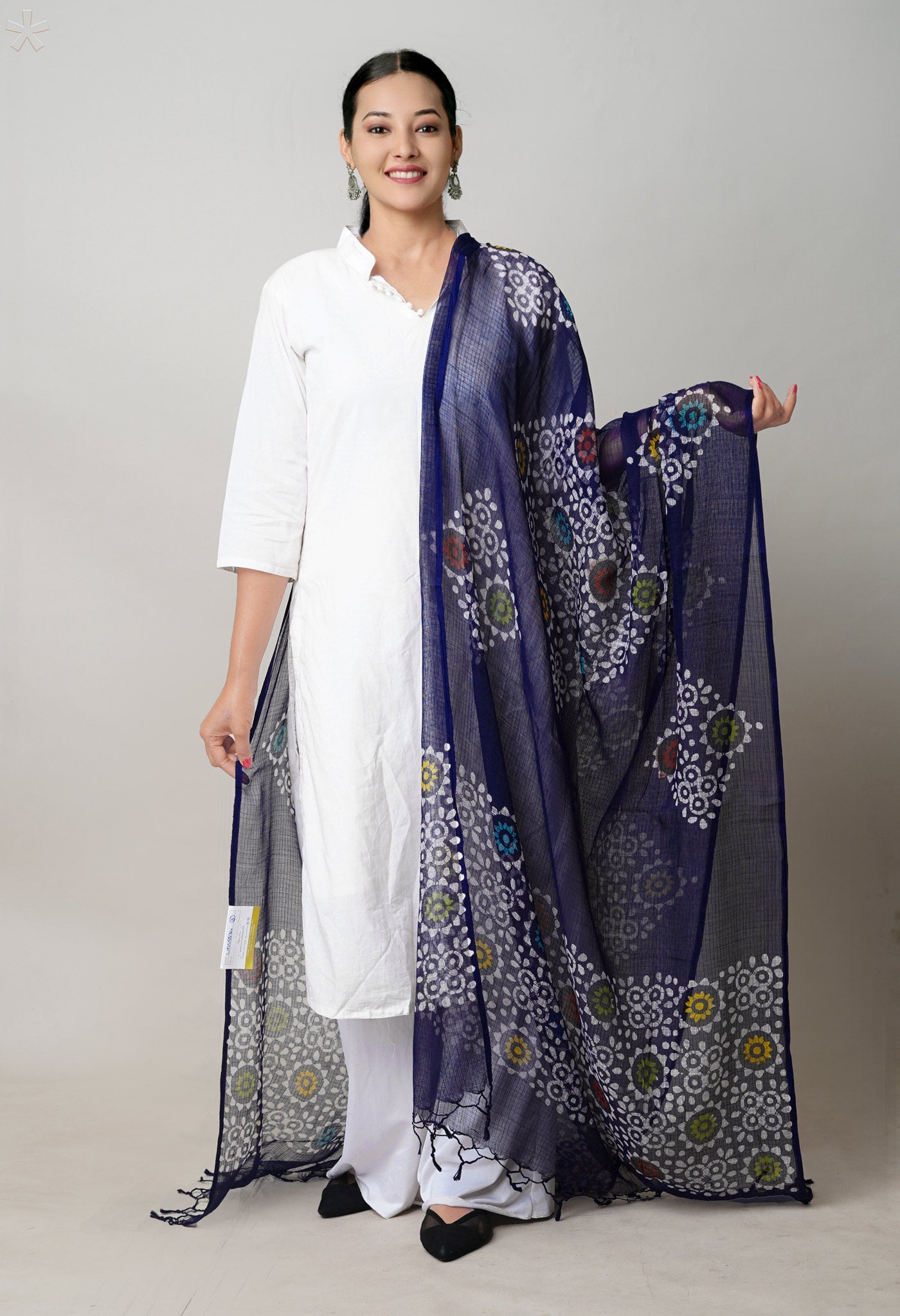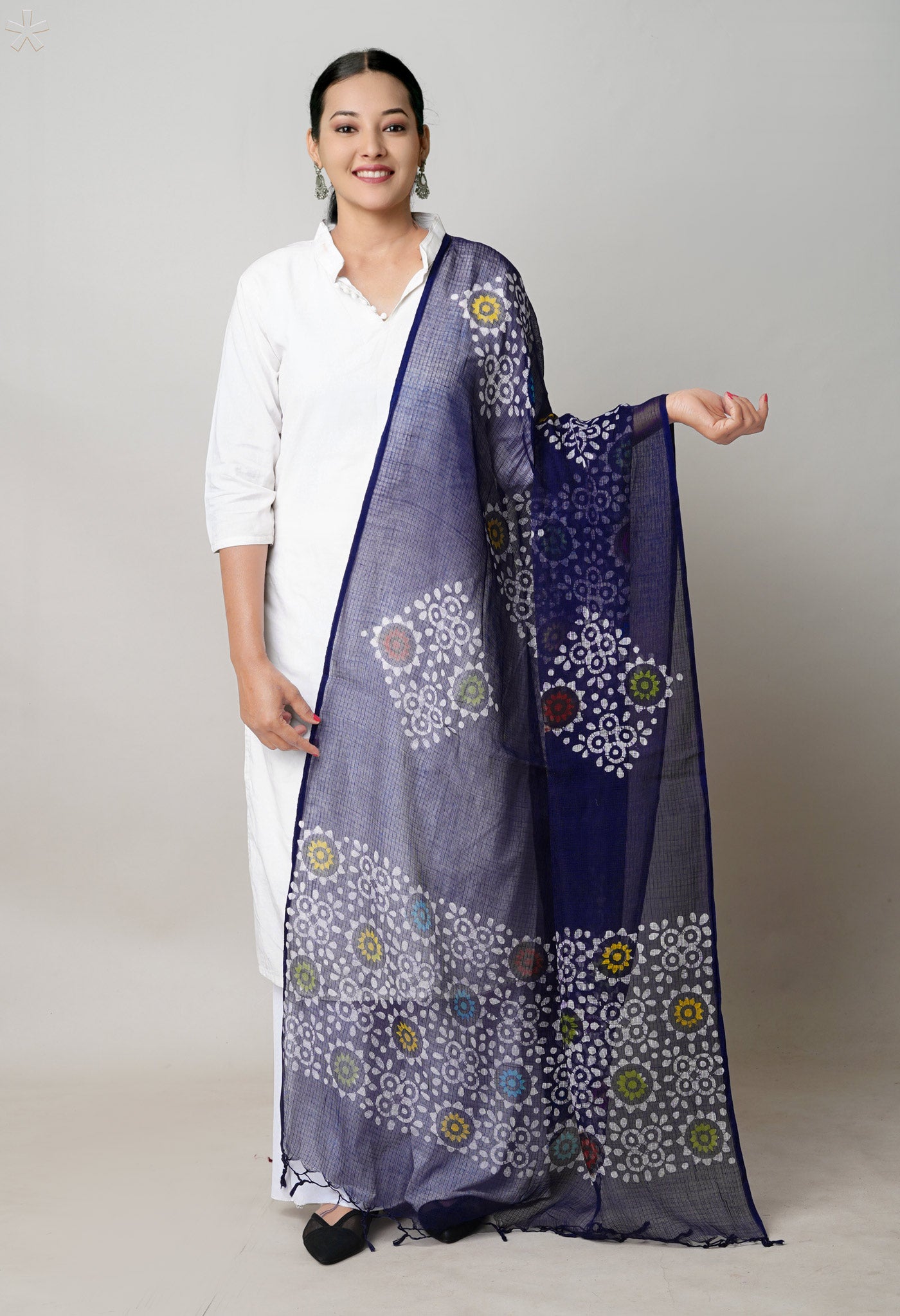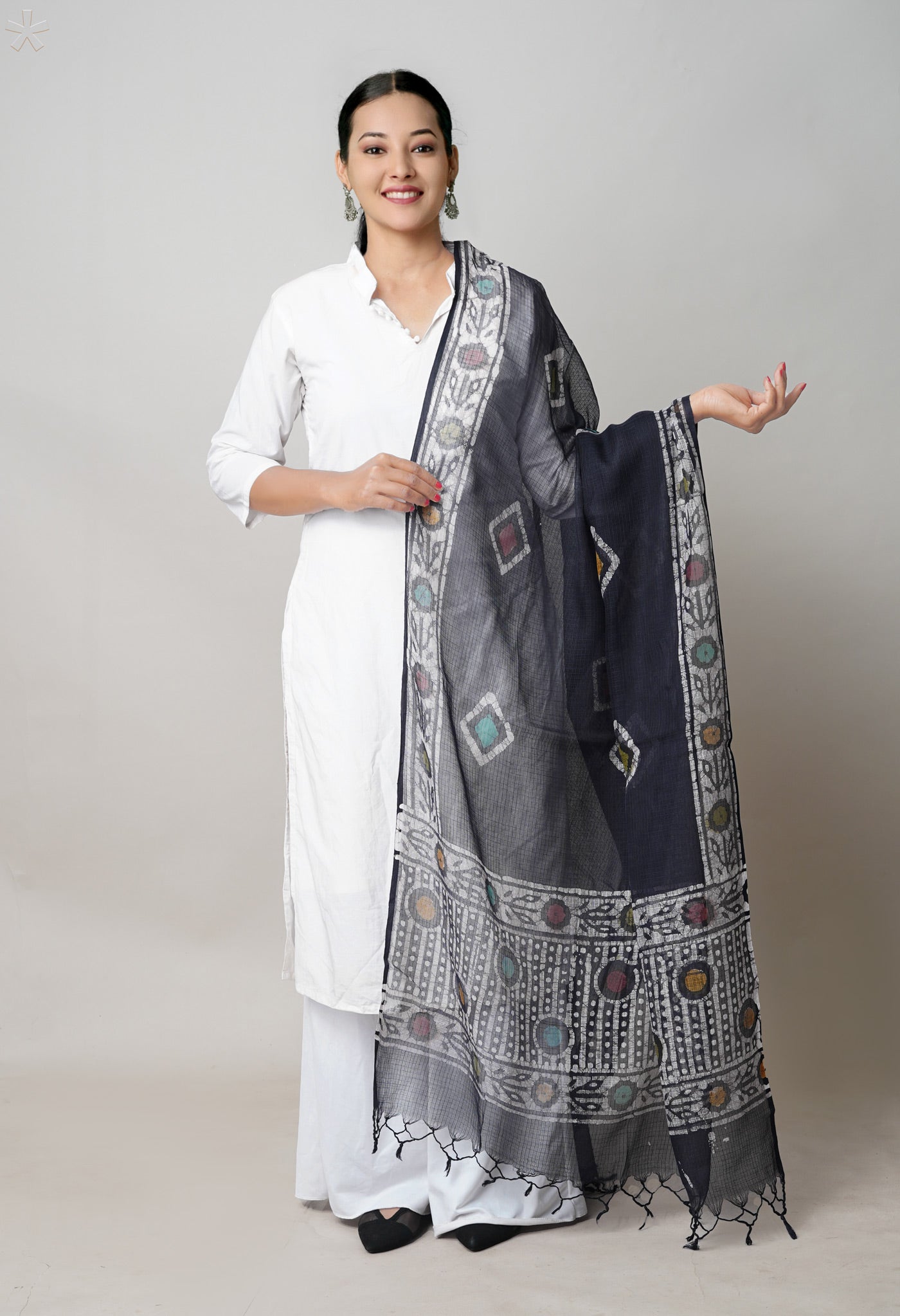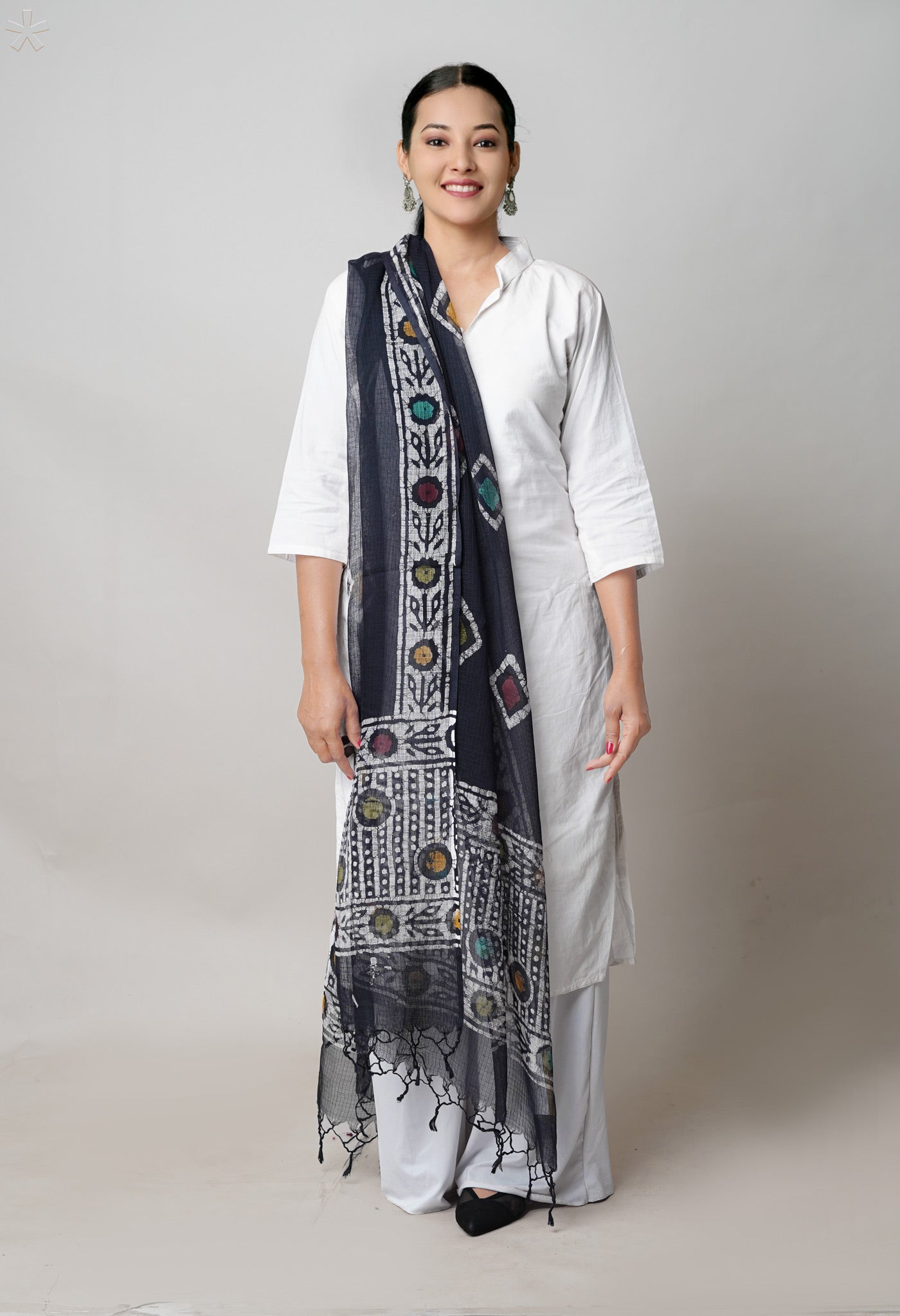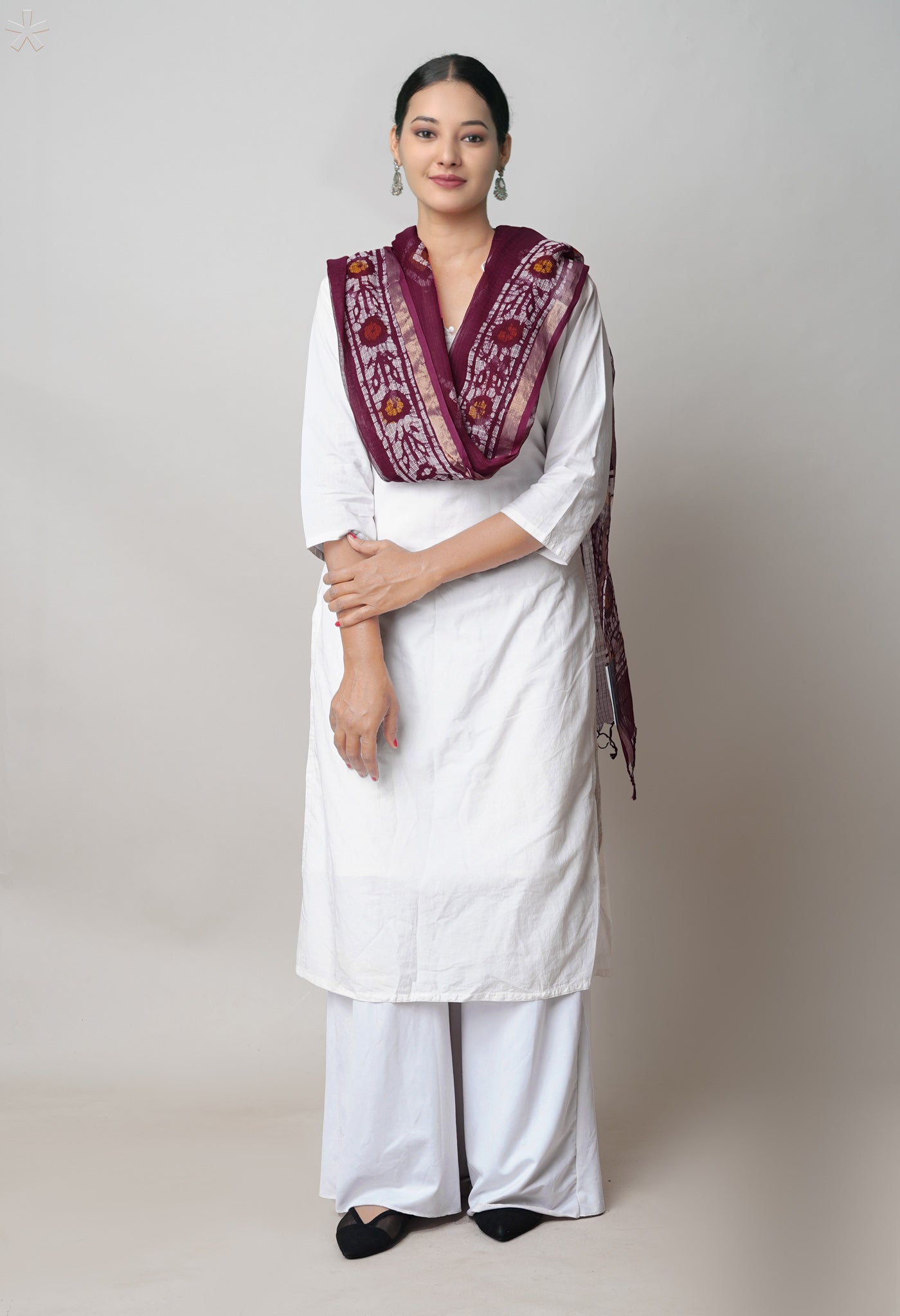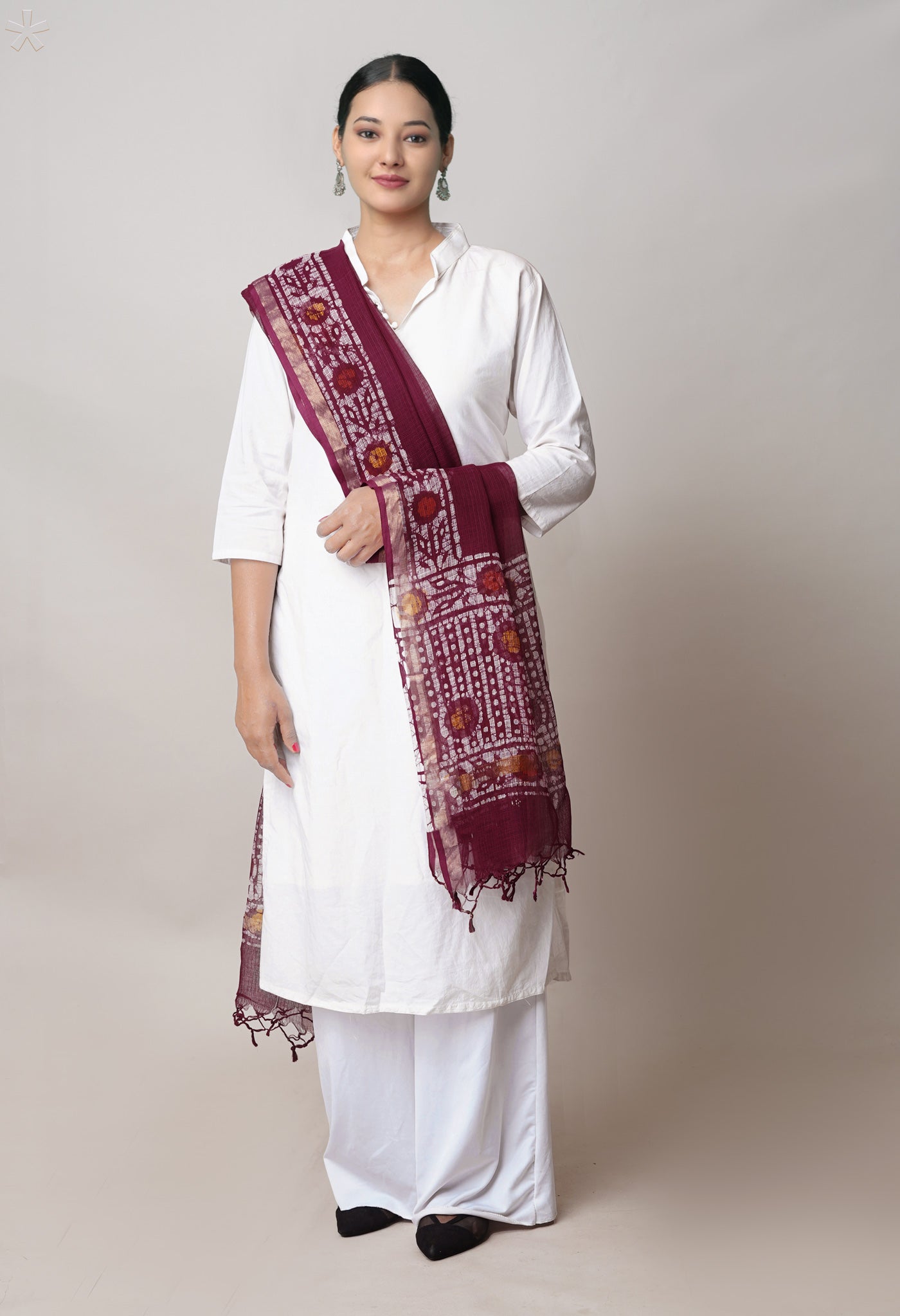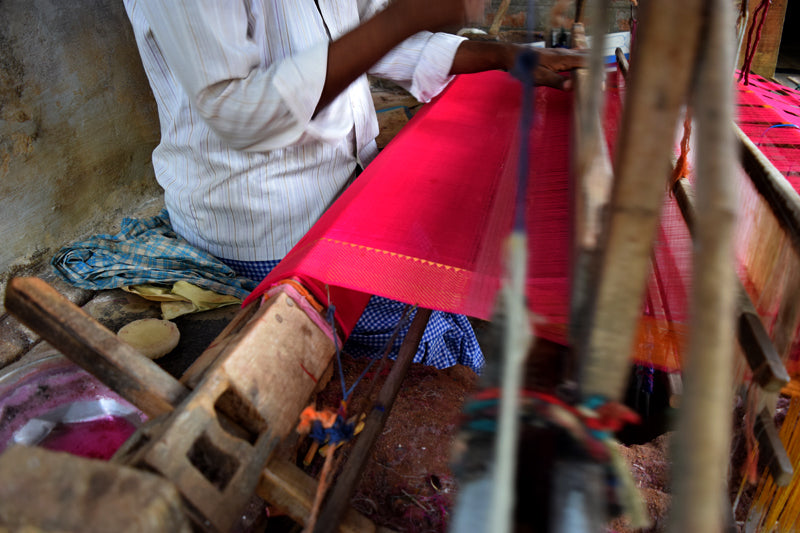
Finely Crafted Cotton Weaves From Mangalagiri
Mangalagiri in Andhra Pradesh is close to Guntur and Vijaywada, on the national Highway connecting Kolkata and Chennai. It was the venue for Mr. Chandrababu Naidu’s oath taking ceremony on 8th June 2014 as the first chief minister of the new Andhra Pradesh state formed after the split with Telangana.
Mangalagiri is also home to one of the finest fabrics in handloom cottons in the country.
Known for the quality of weave and extraordinary saree creations, Mangalagiri cottons are fine examples for soft, smooth, finely woven cotton fabrics that have stood the test of time.
What is special about the Mangalagiri sarees?
In fact, the Mangalagiri handlooms, have several unique and striking features that make them stand out.
- Counts or thread density per square inch range from 40 (coarse) to 120 (superfine), sometimes more. The fine count weaves in fact have a diaphanous or gossamer appearance and considered as export quality.
- The use of zari was once limited to borders. Today silver and golden coloured zari is a major attraction covering borders, the pallu (end piece) and popular motifs like leaf, mango, parrot, and gold coin.
- The experimentation with colours is phenomenal with basic designs given a new meaning with thrilling combinations of light pink with magenta border, maroon with mustard stripes, an olive green field with navy blue borders fuelling the imagination of the market.
- The Nizam border, unique to the Mangalagiri variety of handlooms, has tiny gopurams across the borders and showcases the religious fervor of the people in the backdrop of the three Narayan Swamy temples of the place.
- The sensational range in shot cottons sport the double shades or shimmering effect sarees due to different coloured threads used in the warp and weft during the weave. Pleasing kaleidoscopic effects like greenish yellow, sunset orange, deep yellow result in the creations.
- Ikat woven motifs and tie & dye colouring techniques are skillfully employed for sensational offerings in design and pattern in a panorama of fast organic and other colours.
- The use of bootis ( small woven motifs), stripes, checks pattern in different counts is done with finesse and accentuates the appeal of these handloom cottons very much. In fact in many cases the use of the jacquard loom has been done brilliantly.
The making of a Mangalagiri saree
 The colouring or dyeing of the yarn is an important process. Washed and then dipped in boiling water to which the desired colour is added, the yarn is slowly turned to give it a uniform colour. Coloured yarn is again washed and dried in the shade, to prevent colour fading or unevenness.
The colouring or dyeing of the yarn is an important process. Washed and then dipped in boiling water to which the desired colour is added, the yarn is slowly turned to give it a uniform colour. Coloured yarn is again washed and dried in the shade, to prevent colour fading or unevenness.
Yarn is then starched, giving the colour permanency and provides a gloss. Starched yarn is generally brought from the merchants by master weavers to be distributed to weavers in groups. In turn the merchants could also purchase the finished product from these weavers, assuring them a decent remuneration and a market for their weaves.
Spinning is then done by the charaka or spinning wheel so that the yarn is converted to thread.
Weaving of these coloured threads being the next step, the threads are loaded onto warp (Pacham) and weft. The thread loaded on the warp (lengthwise lay) is generally for four sarees which could take about a week to weave. Remuneration would be slightly above Rs.1000 for a Pacham.
Pit looms with Jacquard arrangement for the design are fixed at ground level with the weaver pedalling in the pit to make the weave. Designs are managed by pre-drawn designs punched on cards and fitted in the jacquard arrangement. Zari wound on small bobbins is generally for weaving on the border.
Popular for the quality of the weaves, the Mangalagiri accent is purely on market tastes and there is a lot of experimentation in all these aspects to try and benefit from the monetary appreciation of the market through its tasteful creations. Most weavers are part of a co-operative that has done its mite in encouraging the weavers through the creation of a channel for the marketing and distribution of the wares that are produced.
https://www.youtube.com/embed/OdbgoOIDN5I
Unnati Silks and Mangalagiri sarees
There are some businesses with a social cause like Unnati silks that has been in the forefront of doing its bit for the cause of ethnic handloom fabrics through its association with master weavers across India. So too Unnati Silks has a good association with Mangalagiri for very many years. In a span of three decades plus it has through its market research pinpointed accurately and even anticipated well, the fusion combinations in handlooms that would appeal to the market. There is in fact a splendid range of such Mangalagiri fusion weaves that it has brought about through these talented artisans.
Take the case of plain Mangalagiri handloom cotton sarees.
This range has plain backdrops with lustrous shine of golden zari borders that make the range elegant and desirable wear.
Then you have the self coloured stripes pattern in the deeper earthy and pastel hues. striking appeal of colour and golden shine, this range with one side borders, the other flank having golden zari wide borders is indeed very captivating.
A third range has stylish checks pattern through kalamkari hand block printing in organic dyes that fascinates and attracts.
There are other ranges with mixed features of these ranges that make the new lot of Mangalagiri Handloom sarees very attractive and very alluring.
[/vc_column_text][vc_gallery type="image_grid" images="8852,8853,8856,8855,8857,8858,8859,8860,8861,8862,8863,8854,8864,8865,8866"][vc_column_text]
Encouraging a traditional art
With encouragement from the government through good schemes that would avail raw materials at reduced rates and the legal backing of the Geographical Indication label for Mangalagiri handlooms, the future augurs well for the inhabitants of this small town, devoted to their task of producing wonderful weaves and in line with market tastes. It is now the duty of the market to respond likewise and provide them sufficient opportunity so that they can continue with dedication and blessings of the deity, more and more offerings through a traditional craft that is a heirloom heritage.
[/vc_column_text][vc_cta_button call_text="To Shop For Mangalagiri Handlooms " title="Buy Now" target="_blank" color="btn-primary" href="http://www.unnatisilks.com/sarees-online/by-popular-variety-name-sarees/mangalagiri-sarees.html"][/vc_column][/vc_row]

